Types of Flooring Materials for Interior Design

Choosing what types of flooring to use for each room of your home is an important decision that could very well impact its resale value. When deciding on flooring its important to consider your budget, the current value of your home, and the comparable value of homes in your neighborhood. This way you can be prepared to create a remodel budget that includes flooring costs so you can get the most out of your remodel when and if you decide to sell your house.
Knowing the best types of flooring for interior design is important to get the most out of your home renovations. The right type of flooring not only gives you something to stand on, it can really influence the feel of your space. Flooring that is beautiful and durable forms the foundation of your room design. Here are some of the most popular flooring materials for you room shown in the options below:
Quicklook: Different Flooring Materials
| Hardwood | Engineered Wood | Ceramic Tiles |
| Bamboo | Travertine | Laminate |
| Vinyl | Linoleum | Natural Marble Stone |
| Carpet | Luxury Vinyl Tiles | Luxury Vinyl Planks |
| Brick | Terrazzo | Cork |
Hardwood Flooring
What it is: When it comes to beauty, nothing can beat the inherent elegance and natural warmth of solid hardwood flooring. Hardwood flooring comes from different species of wood, harvested from trees.
There are numerous species of wood which can be used as flooring and each one comes with a distinct wood graining pattern. The way the wood is cut and how it gets assembled will also result in a different look. They can be arranged in different patterns using a wide variety of cuts, sizes and widths.
You can also find them in different finishes, styles and sizes and they can match with a variety of interior design styles whether traditional, rustic, contemporary, transitional or modern.
The most common species of wood for hardwood floors include oak, pine, maple, fir, birch, cherry, beech and bamboo. Hardwood floor comes in tongue-in-grooves or planks which can be laid in any desired pattern. It can be pre-finished and unfinished flooring. Pre-finished flooring comes sanded and sealed, while the latter is raw and unsanded.
Pros of Hardwood
Distinct warmth and natural beauty – No other flooring material can compare to the distinct elegance of hardwood floors. Hardwood floors can bring in a sense of warmth and coziness in a space.
Can be refinished – A great feature about hardwood is it can be refinished over and over to increase its lifespan. Scratches are just a minor concern because they can be refinished.
Durable and long lasting – Hardwood flooring can last a lifetime provided that they are properly cared for.
Versatile and offers design flexibility – Hardwood floors suit a variety of interior design styles from traditional to contemporary. It provides a neutral background that allows for decorating a variety of styles, looks and designs.
Increases the value of your home – Hardwood floors can increase the value of a home and homeowners can expect a 100% return of investment once their property is sold.
Hypoallergenic – Unlike carpet flooring, hardwood floors do collect dust and other allergens, making them the best option for people with allergies.
Cons of Hardwood
Can get damaged from moisture and sensitivity to varying temperatures – Hardwood flooring can be sensitive to moisture though, too much will cause warping or discoloration.
It also has the tendency to rot, swell and cup when it becomes wet. Hardwood flooring can get damaged when exposed to varying temperatures and usually expands during the cold season.
Requires more upkeep compared to other flooring – Although hardwood floors are easy to clean, they require frequent mopping and sweeping.
More expensive than other flooring materials – Compared to other flooring materials, hardwood floors can be a hefty investment.
Can get scratched – Hardwood floors can get scratched over time, but the good thing is, it can be repaired.
Not pet friendly – Hardwood floors may not be a pet friendly option because aside from claws that can leave marks on its surface, its smooth finish can cause them to slip.
Durability of Hardwood
Solid hardwood flooring is one of the toughest and strongest materials in the market. In fact, its lifespan can last at least 30 years to as much as 100 years old because it can be repeatedly sanded down and refinished to keep it looking good.
Colors of Hardwood
Hardwood floors are both beautiful and durable. The natural beauty and warmth of wood is incorporated in this material, with colors and textures depending on the type of flooring used.
Hardwood floors typically come in light, medium and dark colors and this will depend on the species of wood. Some popular wood colors include light and natural, rich and dark wood and taupe.
Hardwood floors may also have cool or warm undertones in them. Cool toned wood are species of wood that have gray in them like maple, ash, poplar and pine. Warm toned wood, on the other hand, are species of wood that look more red, yellow or orange like cherry, mahogany and cherry.
There are also neutral toned wood or those that have beige mass tone. Popular types of neutral toned wood are walnut, hazelnut and white oak. These species of wood are the most versatile.
Cost of Hardwood
Though hardwood floors provide a good return of investment, they are generally more expensive than other types of flooring materials. In the U.S those who wish to install hardwood should expect to pay around $3 to $8 a square foot for common types with more exotic hardwoods ranging up to $14 per square foot.
Professional installation will typically cost between $5 to $12 per square foot, depending on the type of species used.. Read more about the cost of hardwood flooring here.
Maintenance of Hardwood
Maintaining hardwood floors is moderately easy. Although daily upkeep requires simple tools and solutions, it needs to be done frequently to keep your flooring looking its best.
Daily upkeep – Sweep or dust daily. Dust can settle into the grains or between floor boards so make sure to sweep hardwood floors daily to prevent build up.
Weekly cleaning – Vacuum weekly. Vacuuming will remove any dirt or dust which you may have missed from sweeping.
Monthly maintenance- Use wood cleaner monthly to make your hardwood floors from looking shiny and new. You can buy this at local hardwares, home depots, supermarkets or online. Some popular brands include Pledge, Bona Hardwood Floor Cleaner and Murphy Wood Cleaner Concentrate. Alternatively, you can also create a homemade solution of white vinegar and water.
Periodic refinishing – Experts recommend refinishing hardwood flooring every 3 to 5 years. Refinishing will typically include sanding and applying a new coat of finish. This method will give even old hardwood floors a fresh new look and will eliminate minor damages like scratches and gouges.
Clean spills immediately – Use a dry or damp cloth to wipe any spills to prevent them from seeping into hardwood floors. Wood has a natural tendency to swell or shrink depending on the amount of moisture and protecting it from liquids will prevent cupping, gapping and splitting over time.
Make sure to use furniture pads – Protect your hardwood floor from scratches by using furniture pads on the legs of your chairs, tables, sofas and other furniture.
Engineered Wood Floors
What it is: With engineered wood flooring, you get a top veneer of wood that is backed by layers of plywood or recycled wood fiber mixed with stone dust. This mix makes for a material that is more stable and less susceptible to changes in temperature or humidity then pure hardwood.
Many engineered wood manufacturers create self-locking flooring that clicks together to install without the need for nails or glue. This makes installation much easier than you would think and can save you considerable money in the process. Not to mention modern engineered wood looks very attractive and in some cases near identical to real hardwood flooring.
Pros of Engineered Wood
Same beauty as natural wood – Engineered wood floors have the closest resemblance to natural wood and they render the same amount of warmth and coziness to a space.
Resistant to moisture and temperature – Unlike natural wood, engineered wood floors are resistant to moisture and are designed to withstand varying temperatures. Due to its composite layers, engineered does not warp, decay, swell or expand when exposed to moisture.
Can be refinished – Just like natural hardwood floors, engineered wood floors can be refinished and minor scratches can be repaired.
Easy to install – Engineered wood floors are a popular choice for DIYer’s because they are easy and quick to install.
Low maintenance -Engineered wood floors are easy to clean and do not require additional treatment like sealing.
Long lasting – Engineered wood floors are very durable and can last for decades.
Lower cost – If you are on a limited budget, engineered wood flooring is the best alternative to natural wood. It may cost less than hardwood flooring but it has fewer weaknesses so it proves to be the best alternative.
Cons of Engineered Wood
Limited resurfacing due to thin veneers – Engineered wood floors can only be sanded and refinished a few times because the veneers can sometimes be too thin.
In some cases, it can only be refinished once before the core layer is exposed. The number of times engineered wood floors can be resanded will depend on its thickness.
Some wood surfaces can fade over time – If you have a very sunlit room it can fade and can be especially noticeable if the sunlight only hits a particular part of flooring and causes discoloration. A remedy to this would be to use curtains or blinds in the sunniest part of the day or cover the affected area with rugs.
Wood requires maintenance and care – Just like regular hardwood flooring an engineered floor will require the same care to clean up spills and avoid scratching.
Using wood floors in a moisture prone environment such as a kitchen or bathroom should be avoided unless you are diligent with cleanup.
Durability of Engineered Wood
Depending on traffic and load, engineered wood floors have an average lifespan of between 20 to 30 years.
Colors of Engineered Wood Floors
The colors for engineered wood floors are very much the same with natural hardwood flooring. Almost any species of wood is available, which means you can find light, medium and dark toned wood in engineered wood floor brands.
Cost of Engineered Wood
In general, engineered wood floors are more affordable than hardwood but are more expensive than tiles, carpet and laminate flooring. On the average, engineered wood flooring can range from $2 to $12 per square foot. Expected to add about $2 to $4 per square foot for the installation.
Maintenance of Engineered Wood
Daily upkeep – Sweep or dust daily. Dry cleaning method is the best way to clean engineered wood floors. Sweep on a daily basis using brooms to keep dirt, dust, pet hair and other debris from building up on your floor. You can also use a lightweight vacuum to clean it.
Weekly cleaning – Mop at least once to twice a week. Use a damp, well wrung cloth or mop to clean engineered floors weekly. Rooms with higher foot traffic might need to be mopped once or twice a week, but those which are used less may only need it on a monthly basis. Mopping is also essential to keep hardwood floors looking shiny.
Monthly maintenance – Deep clean on a monthly basis. Even with daily cleaning, dirt can still build up over time so you need to deep clean engineered floors to keep them looking good and hygienic.
Use a cleaner that is appropriate for engineered wood floors – Mix a cleaner dedicated for engineered wood flooring like Kahrs Cleaner.
Mix it with water and use according to the manufacturer’s instructions. Most of these products can be applied using a rag, mop or sponge and require rinsing with water. You can then wipe it down with a clean, dry cloth or towel to remove any excess moisture.
What to Avoid and tips
Avoid using a vacuum with a rotating bristle bar because it can damage your floors.
Avoid harsh chemicals such as ammonia because they can damage engineered wood floors.
Likewise, steer away from wax based and oil based cleaners and soaps.
Avoid using abrasives like a steel wool brush or scouring pad to buff out marks or scratches on engineered wood floors because they can worsen it. Microfiber cloth works best.
Wipe spills immediately. Prevention is key to keeping any flooring from looking its best.
Use furniture pads or felt padding on chair and table legs to prevent scratches on the surface of engineered wood floors.
Ceramic Tiles
What it is – Ceramic tiles are made from a mixture of clay and shale that are baked and hardened in a kiln. Ceramic tiles come in a variety of shapes, colors, sizes and textures and you can mix and match these to create a floor with custom patterns. Ceramic tiles come in four different types of tiles which are glazed, porcelain, terracotta, and quarry tile.
Glazed tile has a coating similar to glass, with a virtually unlimited amount of colors and types to choose from. Porcelain tiles are often used in exterior applications due to their durability. It can be purchased glazed or unglazed. You can get more information about porcelain vs ceramic tile here.
Terracotta tile is an unglazed tile with a rustic charm. However, being unglazed terracotta needs to be sealed to prevent staining. Quarry tile is an unglazed ceramic usually with a reddish-brown color that has better slip resistance than glazed tiles.
Ceramic tiles are produced by heating natural clay and other synthetic materials then covering it with a protective finish like glazing. Porcelain tiles and ceramic tiles are often interchanged because they look very similar, but they actually differ in terms of their composition, amount of water that they absorb and the way each one is made.
Pros of Ceramic Tiles
Durable and long lasting – Ceramic tile flooring is extremely tough, durable and can withstand wear and tear from high traffic areas.
Visually appealing – The different design and layout patterns of ceramic tiles can be used to produce interesting interiors.
Suitable for areas with high foot traffic – It can be used in any type of space, including those with heavy traffic and load.
Provide more structural support compared to vinyl tiles – Ceramic tile flooring is more stable compared to other flooring materials.
Moisture resistant and non sensitive to changes in temperature – It would not get damaged from varying humidity and temperature changes.
Easy to maintain – Daily upkeep is fairly simple and does not require special tools and treatment.
Cost friendly – The cost of ceramic tile flooring is very affordable.
Available in a wide variety of colors, designs, styles and sizes – There are a lot options you can choose from.
Cons of Ceramic Tiles
Slippery when wet – Some ceramic tiles, especially those that have glossy finishes can be slippery, so make sure to choose textured tiles or “slip resistant” tiles to lessen this hazard.
Can chip – Although extremely durable, ceramic tile can occasionally chip, particularly around the edges
Can be cold and hard underfoot – Ceramic tile flooring is not a good insulator and can become extremely cold.
Durability of Ceramic Tiles
According to the National Association of Home Builders (NAHB), the average life expectancy of a ceramic tile floor is around 75 to 100 years , provided that it is properly cared for.
Colors of Ceramic Tiles
Ceramic tiles are available in almost any color. It comes in a wide variety of sizes, patterns and designs — some of which mimic the appearance of natural materials like wood and stone. Because of the endless options they offer, you can surely find a color which will match the scheme and style of your home.
Cost of Ceramic Tiles
Ceramic tiles are one of the most affordable flooring materials in the market, starting at $5 per square foot. For installation, the average costs range from $7 to $14 per square foot.
Overall, the project costs of installed ceramic tile flooring can range from about $15 to $60 per square foot, for material and labor, depending on the quality of the tile and the difficulty of installation.
Maintenance of Ceramic Tiles
Daily upkeep – Sweep or dust daily. Sweep your floors a couple of times a week to remove any dirt and dust.
Weekly cleaning – Mop at least once to twice a week. Once you’ve swept your ceramic tile flooring, you can mop it. Mix warm water with a mild detergent and apply it with a chamois mop or rag. Change the cleaning solution often so the mop won’t leave a hazy film on top of your tiles.
Vinegar or lemon juice with hot water solution. One of the best homemade cleaners is lemon juice or white vinegar mixed with hot water. Apply it to the floor using a chamois mop or rag and buff dry with a clean cloth.
Monthly maintenance – Deep clean on a monthly basis. For a deeper clean, scrub ceramic tile floors with a polisher-scrubber or an electric floor washer. Deep cleaning will brighten the tile and the joints.
Make your own deep cleaning solution. Mix ¼ cup of low sudsing detergent with 1 gallon of water, apply with a polisher scrubber and rinse well. Alternatively, you can also use a mixture of 2 tablespoons of tri-sodium phosphate or commercial cleaning powder with a gallon of water.
Cleaning the grout – Spray with grout cleaner. Grout is porous and can easily absorb dirt and they can easily make your tiles look dirty. Spray the grout with a mild bleach solution or a commercial grout cleaner. Allow to sit for 10 minutes and use a small brush to scrub the grout. Rinse thoroughly with water and wipe to dry.
For deep seated stains use a mixture of baking soda and water. Make sure that the consistency is like a paste. Apply it to the grout then let it sit overnight. Scrub with a toothbrush or nylon brush then let the grout air dry.
Seal the grout with a silicone based grout sealer to protect it from stains.
Dealing with Stains – Coffee, juice and tea stains. Clean the ceramic tile’s surface with a mixture of warm water and detergent, then apply some hydrogen peroxide directly on the stain.
Grease stains – Use club soda or a commercial floor cleaner to remove grease stains.
Ink stains – Soak a cloth in diluted bleach and lay it on top of the ink stain. Leave the cloth until the stain is removed and rinse thoroughly.
What to Avoid When Cleaning Tiles
Avoid using a sponge mop because it only pushes dirt into the grout.
Do not use an abrasive cleaner because it will only scratch the surface of ceramic tiles.
Do not use a metal brush in cleaning the grout because it may scratch the ceramic tile’s surface.
Bamboo
What it is – Bamboo flooring is made up of strands of bamboo glued together to form solid strips or planks. Bamboo may look like hardwood but it is actually grass. Bamboo flooring is exotically beautiful, tough and durable. It is considered a sustainable material as bamboo plants grow and regenerate quickly.
Bamboo flooring is engineered and produced by shredding strands of bamboo and pressing them together with heat and adhesive. It is classified into three types namely, horizontal, vertical and woven.
Types of Bamboo Tiles
Horizontal – Bamboo strips are layered and pressed together so the stalks become visible. This preserves the authentic look of the grass.
Vertical – Bamboo strips are laid side by side before gluing. The resulting graining pattern is cleaner and more contemporary.
Woven or stranded – Strands of bamboo are shredded and are compressed with resin to produce a hard surface and an exotic, interesting look.
Pros of Bamboo
Durable and long lasting like traditional hardwood flooring – Top quality bamboo flooring has the same durability as hardwood flooring and can last for years.
Perfect for modern interiors – Bamboo flooring has a sleek, clean aesthetic that is perfect for contemporary and modern interiors.
Easy to maintain – It can be cleaned easily by sweeping and mopping.
Can be refinished – Just like hardwood floors, bamboo flooring can be refinished and the number of times will depend on the thickness of the planks.
DIY friendly – Bamboo flooring is easy to install and the process is pretty straightforward.
Pet friendly – It is one of the most pet friendly flooring materials since it can withstand pet’s nails. In addition, it is not prone to stains.
Eco friendly – Bamboo is a fast growing plant and a rapidly renewable resource, which makes it one of the most eco friendly flooring materials in the market.
Cons of Bamboo
Susceptible to water damage – Not suitable for spaces with standing water like bathrooms and basements.
Limited colors – Bamboo flooring is only available in a few tonal shades.
Does not easily fit with all interior styles – The contemporary look of bamboo flooring is not suitable for traditional interiors.
Durability of Bamboo
Bamboo flooring is durable but it has its limitations. On the average, it can last for 10 to 25 years, provided that it is properly cared for.
Colors of Bamboo
Bamboo comes in a variety of colors, but there are three general types, namely natural bamboo, stained bamboo and carbonized bamboo.
Natural Bamboo has a light blonde color, while Stained Bamboo has been finished with color. Bamboo can be easily stained or painted in any color.
Carbonized Bamboo is dyed by adding carbon to the bamboo during production to color it throughout. The colors for carbonized bamboo ranges from light brown to tan.
Cost of Bamboo
The cost to purchase and install bamboo is comparable to hardwood flooring. Bamboo flooring costs about $3 to $9 per square foot, excluding installation. If you opt for professional installation, expect to pay an additional $3 to $5 for the labor.
Maintenance of Bamboo
Daily upkeep – Sweep or dust daily. Regularly scrub, sweep and dust bamboo flooring to keep it looking new and polished.
Vacuum regularly. The best and fastest way to clean bamboo flooring is by using a vacuum cleaner. Make sure to follow the grain of the bamboo and go through the plank joints to remove hidden dirt.
Weekly cleaning – Occasionally wipe the surface of bamboo flooring with a damp mop or microfiber cloth.
Monthly maintenance – Deep clean on a monthly basis. Buy the appropriate cleaning products for bamboo flooring. You can use hardwood cleaners with PH neutral ingredients to make sure that they do not harm your floor finish.
These types of cleaners are usually concentrated and need to be diluted in distilled water. Bamboo cleaners effectively remove stains, dirt and grease without causing your floor to warp. Apply oil on the surface of bamboo flooring to enhance its grain, color and durability.
Bamboo Floor Tips
Use furniture pads on the legs of tables and chairs to protect your bamboo flooring from looking faded and worn out.
No need to seal the surface of bamboo flooring.
Travertine
What it is – Travertine has been used as a building material since Roman times. Even the world famous Roman Colosseum is constructed almost entirely of travertine.
Often used for patios and garden paths it is also used extensively in modern architecture. Common uses inside include travertine showers, façades, backsplashes, wall cladding, and flooring.
Travertine is a type of limestone that forms around hot springs. Minerals dissolve and reform in layers to create travertine. It has a marble like texture and comes in attractive earth tone colors that match a variety of interior design styles.
Pros of Travertine
Highly customizable – Travertine is easy to cut into many custom shapes.
Stylish – Has a unique blend of mountain born beauty and can add sophistication to a space.
Durable – Travertine is a very durable stone and has the inherent ability to withstand wear and tear withouts showing significant damage like scratches, chips and cracks.
Adds real estate value – Natural stone like travertine adds value to a home because they offer potential buyers durability and natural beauty.
Ages gracefully – Over time, a weathering effect can occur in travertine flooring because of the wear and tear, but this is priced because it gives the stone a distinct character. The natural antique patina that comes with it as it ages is one of its most unique traits.
Easy to replace – In the event of damage, travertine flooring can be easily replaced because it is typically installed in tile form.
Cons of Travertine
Expensive – Travertine is considered to be a premium flooring material, thus the price is higher than other options.
Cold underfoot – Travertine has poor insulation properties and is cold during winter
Slippery – Natural stone flooring is slippery when wet especially if it has a polished finish.
Requires periodic sealing – Travertine is naturally prous and requires you to seal the surface regularly.
Very heavy – Installation would require more manpower because of the weight of the stone.
Durability of Travertine
Travertine floors can last as long as 60 years provided that they are installed properly, sealed periodically and maintained carefully.
Colors of Travertine
There are different colors according to which minerals are present. Some color variations are tan, rust, ivory, beige, reddish brown and gold.
Cost of Travertine
Travertine is considered a high end flooring material. In terms of cost, it is more expensive than other natural stones like granite, but cheaper than marble. A travertine floor averages about $15 per square foot for the materials.
But depending on the quality and finish, its price can vary substantially from as low as $3 to $30 per square foot. The least expensive finish for travertine floor is a honed finish and the most pricey one is the sealed kind.
Maintenance for Travertine
Daily upkeep – When properly sealed, travertine will only require simple damp mopping with a mild soap solution to keep it looking clean.
Periodic maintenance – Sealing and resealing the stone – Similar to any natural stone, travertine has microscopic pores where spilled liquids can seep into, so it needs to be applied with a penetrating sealer and a barrier surface sealer during installation.
This dual treatment needs to be periodically repeated throughout the life of the floor to retain its glossy surface and to give it added protection from potential damage.
What to Avoid and Travertine Floor Tile Tips
Avoid acidic substances – never use acidic substances like vinegar, citrus fruits and lemon because it will dull the surface of travertine floors.
Do not use harsh chemicals – Ammonia and bleach should also be kept away from travertine floors because it can cause surface damage.
Laminate
What it is – The “workhorse” of flooring materials, laminate, is one of the best options you can get. Laminate flooring has a top layer protected by a plastic coating and backed by other layers of plywood or compressed fibers. It is quite similar to engineered wood with a top layer backed by plywood or compressed fiber.
Laminate can look like real wood or even other materials like stone, tile or concrete and can also come in a variety of colors and patterns.
They come packages as planks or tiles and can even be installed on top of existing flooring without using nails or glue. For more details, see some of the pros and cons of laminate vs hardwood here.
Pros of Laminate Floors
Has a similar look as hardwood flooring – When it comes to looks, modern laminate flooring is a good alternative to natural hardwood because it has realistic grains and shares the same distinct colors.
Very durable – Can withstand wear and tear. Compared to other flooring materials, laminate is more stable and it seams do not open up even with changes in humidity.
Stain resistance – Laminate flooring is resistant to staining and fading.
Easy to install and ideal for DIY projects – The installation process for laminate flooring is much simpler compared to tiles which makes it ideal for do it yourself project.
Low maintenance – Cleanup and maintenance is easy. Regular cleaning online requires sweeping and a bit of mopping.
Inexpensive – Laminate flooring is one of the most affordable flooring materials in the market.
Lightweight – Unlike natural stone, laminate is lightweight and easy to handle.
Hypoallergenic – The materials that make up laminate flooring is non allergenic and will not trigger any allergies.
Cons of Laminate Tile Floors
Not suitable in wet areas – Although durable, laminate flooring is not recommended to high moisture areas like bathrooms and laundry rooms because they can be susceptible to water damage.
Does not add long term value to your home – because laminate is inexpensive, it will not add real estate value to your home.
Non repairable – When worn out or damaged, laminate flooring needs to be replaced because it cannot be refinished.
Durability of Laminate Tiles
The durability and lifespan of laminate flooring greatly depends on its type and quality. Low quality laminate flooring has an average lifespan of 10 to 15 years , while high quality laminate flooring with proper installation can last for up to 20 to 30 years.
Colors of Laminate Panels
The colors for laminate flooring and hardwood flooring are visually the same because laminate is produced to look like the latter.
Colors are typically named after the species of wood, so you can find options in light, medium and dark shades of brown. They also come in a variety of textures like grained, matte and glossy.
Cost of Laminate Installation
Laminate flooring is one of the most inexpensive flooring materials in the market. On the average, the cost of laminate flooring can run anywhere between $1 to $3 per square foot.
Premium quality or designer laminate flooring is more expensive and falls under a $10 to $12 per square foot price range. The prices generally depend on the quality of the print layer and the thickness of the wear layer. When it comes to professional installation, expect to pay an additional amount of around $5 per square foot.
Maintenance for Laminate Tile Flooring
Daily upkeep – Sweep laminate floors daily. Remove any dirt from laminate flooring using a soft broom.
Tackle spills as they happen. Do not let stains sit on the floor, instead wipe them immediately because they can potentially damage laminate floors.
Monthly maintenance – Carefully mop your laminate floors every month. The best mop to use for laminate flooring are microfiber mops because they are gentle enough and won’t scratch the
Use a DIY laminate floor cleaner for deep cleaning. Combine a teaspoon of clear unscented dish soap with a gallon of hot water. Alternatively, you can use a mixture of white vinegar diluted in a gallon of warm water.
These solutions are effective against removing a slight film or waxy buildup on laminate surfaces without harming the surface. Just make sure that when you apply it, the mop you use is well wringed out.
For tough stains like candle, ink and gum. If chewing gum has accidentally stuck in laminate flooring, apply a plastic bag with ice, wait until it hardens and gently remove with a scraper or plastic card. Other stains like nail polish, ink, paint or crayons can be easily removed with rubbing alcohol.
What to Avoid and Laminate Tips
Read the instructions that come with your laminate flooring before cleaning. Each brand has its own recommendations based on the materials used during the production of laminate floors and these product guides are helpful in keeping your floor clean and looking its best.
Do not use abrasives. Laminate floors can scratch, so avoid using abrasives like steel wool. Opt for a soft-bristle broom, dust mop or lightweight vacuum to remove dust and other debris.
Do not use too much water when mopping. If you are going to use a regular mop, make sure to wring out until it is completely dry. Too much water can seep into the seams and may cause swelling, bubbling, staining and fading.
Skip products which aren’t made for laminate flooring. Avoid using oil based cleaning products because they can leave streaks. Do not use wax or floor polishes on laminate floors.
Use furniture pads. To protect the surface from future damage, put felt pads under the legs of chairs and tables to prevent the floor from getting scratched when they are moved.
Keep your pet’s nails trimmed. Dog’s or cat’s nails can scratch laminate floors so make sure they are trimmed.
Vinyl
What it is – Vinyl flooring, also known as “resilient flooring”, is a composite material made of several layers of materials sandwiched together to form a highly durable and practical floor. Vinyl flooring can closely resemble the look of wood or stone to give you the appearance you want, and works as a great substitute.
Vinyl flooring comes in different thicknesses which range from .079 inch or 2 millimeters to .315 inch or 8 millimeters. Thick vinyl flooring provides more stability and cushioning.
Vinyl flooring is flexible and slightly soft underfoot – this is because under it is backed by a layer of felt or foam. Despite how they feel though, they are very tough and durable as they have a wear layer on the upper surface that is stain and scratch-resistant. Vinyl is maintenance-free and can come in a variety of colors and patterns.
Pros of Vinyl
Durable – Vinyl is one of the most resilient flooring materials in the market.
Waterproof – Vinyl flooring is not susceptible to water damage which makes it suitable for wet areas like bathrooms, laundry rooms and basements.
Stain resistant – Spilled liquids are the least of your worries because vinyl flooring will not get stained from them.
Scratch resistant – Unlike other flooring materials, vinyl will not get scratched easily, which makes it a pet friendly option.
Hygienic – Resists the growth of molds and mildews.
Low maintenance – Vinyl flooring doesn’t need to be sealed, stained, polished or waxed.
Cost friendly – Vinyl is one of the most affordable flooring materials in the market.
Wide availability – Comes in a wide variety of designs, colors, styles and patterns
Comfortable underfoot – Vinyl flooring is not that hard underfoot and is still comfortable to walk or sit on.
Easy to install – The installation process for vinyl flooring is very straightforward and does not require special tools, making it very DIY friendly.
Cons of Vinyl
Can be dented – May dent from heavy appliances, furniture and weighty objects.
Can fade in sunlight – Cheap vinyl fades in direct sunlight.
Difficult to take out – Glued down vinyl can be difficult to remove.
Durability of Vinyl
Vinyl flooring is highly durable and can last for 10 to 20 years if installed and maintained correctly.
Colors of Vinyl
One of the main advantages that vinyl flooring has to offer is its wide range of colors, patterns and designs. Aside from solid colors, vinyl flooring often mimics the appearance of natural materials like stone and wood.
Common solid colors for vinyl flooring include neutrals like brown, white, grays and black, to bright and muted hues of virtually any color. For vinyl planks, the typical colors are woods in light, medium and dark tones.
Cost of Vinyl
Vinyl flooring is very affordable and is perfect for those working with a limited budget. The average cost of luxury vinyl tile ranges from $2 to $5 per square foot.
Maintenance for Vinyl
Daily upkeep – Sweep vinyl floors frequently. Remove any dirt from vinyl flooring using a broom to make it last longer.
Wipe up any spills right away. Prevention is always key to avoiding future damage, so make sure to wipe up any standing liquids on your vinyl flooring’s surface.
Weekly maintenance – Carefully mop your vinyl floors with a mop dampened with warm water. Do not use too much water because it can seep into the cracks, seams and edges of vinyl floors. Over time, this wears down the adhesive that keeps the material glued down, causing the corners to curl.
What to Avoid and Vinyl Tile Flooring Tips
Do not use heavy duty cleaners. Low impact cleaning techniques work best for vinyl floors.
Use the right cleanser. Use cleaning agents which are specifically made for no wax floors. Apply it with a mop or sponge and rub it just enough to loosen the dirt.
Do not use wax for “no wax” vinyl because it has a clear polyurethane coating which makes it shine.
Always use furniture protectors and pads. Put furniture pads on tables and chair legs to prevent them from denting vinyl floors.
Rolling casters can also damage vinyl floors, so opt for chairs and other furniture pieces with felt tips.
Linoleum
What it is – Linoleum is considered a very environmentally friendly flooring choice. This material is made of renewable, biodegradable materials such as linseed oil and cork. Mineral pigments are then added to this mix to create a variety of rich and vibrant colors. Linoleum comes in sheets, laminated planks or tiles. They are usually either glued in place or installed as a floating floor design.
It is recommended to purchase linoleum that has a protective coating to help prevent staining, and scratching. While linoleum flooring is durable, it will need to be cleaned occasionally like other types of flooring.
Pros of Linoleum
Exceptionally durable – Linoleum flooring is highly resistant to wear and tear and can last for decades.
Very affordable – Linoleum flooring is much more inexpensive than other flooring options.
Offers a wide array of colors – When it comes to colors, the patterns, styles and designs of linoleum floors are endless, making it a suitable option for a variety of interiors and schemes.
Water resistant – Linoleum floors are water resistant and ideal for wet areas like bathrooms and kitchens.
Eco friendly – It is made with renewable materials and is biodegradable. In addition, linoleum flooring does not emit volatile organic compounds (VOCs), which may affect one’s health and the environment.
Scratch resistant – It hides wear and tear much better than vinyl flooring and does not get scratched easily.
Requires little maintenance – Keeping linoleum floors from looking their best is fairly easy because it only needs occasional sweeping and mopping.
Cons of Linoleum
Can be dented – May dent from heavy appliances, furniture legs and weighty objects.
Expensive to install – Requires professional installation which can be a bit expensive.
Can fade from direct sun – Linoleum flooring can turn yellow or darken when exposed to direct sunlight.
Durability of Vinyl
Linoleum flooring is also very resilient and highly durable. With proper care, this flooring material can last for over 40 years.
Colors of Linoleum
Linoleum flooring has a solid color and pattern that is imprinted throughout the material, limiting the design options. But this characteristic also means that the design won’t fade easily over time.
Nowadays, the patterns and colors for linoleum floors are more diverse because of the advanced printing techniques used in manufacturing. It is available in a wide array of vivid colors, unique prints and designs that sometimes mimic natural materials’ appearance.
Cost of Linoleum
Linoleum flooring is more expensive than vinyl flooring but cheaper than natural stone and hardwood. On the average, sheet linoleum costs between $2 to $2.50 per square foot and linoleum tiles average about $3.50 to $5 per square foot installed.
High end, luxury or designer linoleum floors come with higher prices. Because it requires professional installation, the final costs are higher.
Maintenance for Linoleum
One of the most significant benefits of linoleum flooring is its low maintenance profile, however compared to vinyl floors, it does require more effort to keep it in top shape because of its softness.
Daily upkeep – Sweep linoleum floors frequently to prevent any build up of dirt. Wipe up any spills right away to prevent any future damage.
Weekly maintenance – Carefully mop your linoleum floors with a mop dampened with warm water. Do it gently and just enough to loosen the dirt.
For stains, use mild detergent or linoleum cleaning solution to prevent damaging the surface.
What to Avoid and Linoleum Tips
Do not use wax for “no wax” vinyl because it has a clear polyurethane coating which makes it shine.
Linoleum is a soft material that can be easily scratched so always use furniture protectors and pads on tables and chair legs to prevent them from denting or gouging your floor.
Linoleum floors require periodic sealing to prevent stains and moisture damage.
Natural Marble Stone
What it is – There are several types of natural stone flooring and this includes granite, slate, limestone, travertine and flagstone, however, marble is considered to be the most luxurious of all. The smooth gloss and subtly colorful veining of natural stone marble flooring gives a room an elegant and high-end feel.
By definition, marble is a type of metamorphic rock that is made up of recrystallized minerals like calcite, dolomite, calcium carbonate or calcium magnesium carbonate. It is naturally made through being subjected to extreme heat and pressure. This alters the texture and structure of the mineral and gives it a distinct veiny appearance.
Marble flooring typically comes in tile form with standard sizes of 12 by 12 inches or 12 by 18 inches, while the thickness ranges from one-quarter to three quarter inches.
Pros of Marble
Offers a very luxurious and high end look – Marble flooring is very elegant, sophisticated and can render a high end look to spaces.
Structurally durable and will not wear and tear easily – Despite being considered a soft stone, marble flooring is durable and is suitable for high traffic areas.
Comes in classy neutral colors – Marble is available in neutral colors which are perfect for traditional and classic spaces.
Highly customizable – This stone can be easily cut into different shapes and can be modified into flooring for any space.
Adds resale value to a home – More buyers prefer natural stone over artificial materials.
Cons of Marble
Porous material – Marble is more naturally porous and more susceptible to stains and watermarks because it is inherently soft.
Must be resealed – Needs to be resealed on a regular basis.
Hard to install – Installation requires precision and needs to be done by a professional.
Unique floor pieces are hard to replace – Marble flooring can be difficult to replace and when one gets damaged, the whole tile needs to be replaced.
Slippery surface – Natural stone resists water and moisture but can feel cold and be slippery when wet.
Durability of Marble
Marble floors can last a lifetime, but on the average, they can last for 25 years, provided that they are properly maintained. They are considerably stronger than most types of flooring and can even last longer than their average lifespan given the right care.
Colors of Marble
Marble is a light colored stone, commonly white, characterized with graceful veining. Its purest form is white but it can come in different variations depending on the minerals present in the stone.
The more minerals present, the resulting marble will have color variations in the veins and swirls. The most popular type of marble has white base with gray veins. More rare and exotic colors for marbles include black, brown, blue, green and yellow.
Cost of Marble
In general, marble flooring costs more than other materials. Professionally installed marble flooring runs anywhere between $10 to $20 per square foot, depending on the type and grade of marble.
For basic marble flooring, you can have options as low as $8 per square foot, while top grade marble can cost up to $47 per square foot.
Maintenance of Marble
Daily upkeep – Wipe up any spills right away. Prevention is always key to avoiding future damage, so make sure to wipe up any standing liquids on your natural’s stone surface because it can seep into the stone. Sweep daily. Regularly sweeping your marble floors is an excellent way to keep them looking clean.
Weekly Maintenance – Mop as needed. Use a well wrung out microfiber cloth in deep cleaning natural stone floors. Short strokes work best on marble floors.
Periodic maintenance – Periodic application of penetrative sealer. Natural stone like marble and granite should be sealed every 4-5 years to help resist moisture and stains from occurring. Other stone, such as sandstone or limestone flooring, or sandstone will need to be treated more often
What to Avoid and Marble Tips
Etching – Etching is one of the most dreaded problems with natural stone. Because they contain calcium carbonate, a type of chemical reaction called etching occurs when they come in contact with acidic substances. Etching will leave a dull make on your marble floors. One of the best ways to protect natural stone is to apply a sealer which would block any liquid that comes in contact with the stone.
Prevent acidic substances from coming in contact with natural stone marble floors. This includes common household items which have a high acid content such as lemons, sodas, ketchup and some cleaning products.
Hot water is your best bet when cleaning natural stone floors. Hot water can effectively remove dirt, grease and other stains without harming the surface of natural stone.
Avoid using harsh chemicals, abrasives and rough brushes.
Use mild detergent and ph neutral cleaners. Alternatively, you can always buy the right type of stone cleaner designed for natural stone flooring.
Stay clear of vacuums because rough brushes and beater rolls can cause damage and scratches to a natural stone flooring’s porous surface.
Carpet
What it is – Made from a thick woven fabric, Carpet is one of the most versatile flooring materials you’ll find. Available in a wide variety of colors, textures and qualities it has remained a popular flooring choice for decades.
Typically made of woven wool or synthetic fibers such as nylon, polypropylene, or polyester. Nylon is generally considered the most frequently used carpet material due to its excellent durability and availability of different styles. See more types of carpet including their pros and cons here.
Pros of Carpet
Adds warmth and color to a room – Carpet flooring can easily make a room feel warm and inviting.
Comfortable underfoot – Carpet is the comfiest flooring option. It’s soft and perfect for bedrooms and playrooms.
Good insulation – It provides added insulation from heat and sound. Carpet flooring offers thermal insulation and can retain warm air, making it suitable for homes in colder climates.
Affordable – Carpet flooring is less expensive than other materials like hardwood and tiles.
Kid friendly – Because of its softness, you do not have to worry about risks of falling or slipping when kids are playing. It is also very suitable for homes where children play a lot on the floor or toddlers are learning to walk.
Quiet to step on – Carpet flooring can dampen sound and reduce noise transmission.
Offers a lot of variety – Carpet flooring comes in a wide range of colors, patterns and piles and designs.
Cons of Carpet
High maintenance – Carpet flooring requires regular vacuuming and periodic professional cleaning services.
Susceptible to water damage and staining – If water seeps into the carpet, your floor can get damaged. Stains also need to be wiped immediately or they may leave marks.
Non hypoallergenic – Carpet flooring holds dust, allergens and can trigger certain allergies.
Can harbor the growth of dust, odor and bacteria – If not properly maintained, molds and mildew can grow on carpet flooring. It is also a conducive environment for pests like dust mites. It can also capture odors which make it suitable for households with pets.
Durability of Carpet
The average for carpet flooring ranges from 5 to 15 years, depending on the type, fibers, carpet cushion and usage. The more wear and tear it is exposed to, the shorter the lifespan will be. So for high traffic areas, carpet flooring would typically last for three years.
Colors of Carpet
Carpet flooring comes in a wide array of colors and styles. The colors are endless but current trends favor earth hues like beiges, warm grays and neutrals. One good thing about carpet flooring is that the textures are also varied and the options for the piles are diverse.
Cost of Carpet
Carpet is one of the most affordable flooring materials. You can find good options for as low $0.65 per square foot, but on the average, its price ranges around $2.50 to $12 per square foot, depending on the material, weave and pile.
Maintenance of Carpet
Daily upkeep – Wipe up any spills right away. Treat stains and liquids as quickly as possible because the longer they set in the carpet, the harder it is to remove. Blot the stain using a white paper or cloth, never rub because it can cause the liquid to penetrate the carpet.
Weekly Maintenance – Vacuum regularly. Vacuuming is the most effective and easy to remove dirt and dust in carpet flooring. Vacuum at least one or twice a week and increase the frequency in high traffic areas.
Periodic maintenance – Use professional deep cleaning services at least once a year. Vacuuming will remove any dirt on the surface of the carpet, while a professional clean will remove anything below the carpet fibers like allergens, pet dander, dust mites, etc.
What to Avoid and Carpet Tips
Utilize door mats. The easiest way to keep carpet flooring cleaner longer is by keeping dirt from getting on them. Use outdoor mats and wipe your shoes before entering your home.
Luxury Vinyl Tiles (LVT)
What it is – LVT or Luxury Vinyl Tiles is a premium, high quality type of vinyl flooring that is added with multiple layers of materials to give it durability. With LVT flooring, you are able to replicate the look of natural materials, minus the impurities that come with the real thing.
In terms of looks, luxury vinyl flooring features surface texture for a more lifelike look. Since it is square in form, the designs often mimic the appearance of natural stone and concrete.
Luxury vinyl tile flooring consists of three layers namely, backing, print design layer and wear layer. The backing is the base which supports the whole material and is fused together using a hot press method.
The print design layer contains the texturized design and realistic design of the tile while the wear layer is the top layer on the surface which gives the tiles maximum durability.
Pros of LVT
Beautiful design and looks like natural stone flooring – It comes in different designs, some of it has authentic textures which give off the same warmth of stone floors.
Unparalleled durability – LVT flooring has different layers, giving it an impressive level of durability. It can withstand different forms of wear and tear and is suitable for low to high traffic areas
Sustainable – Built to last for years and meets LEED (Leadership in Energy and Environmental Design)
Do it yourself installation – Can be easily installed, in fact you can find options which come with an adhesive backing.
More affordable than natural stone flooring – If you want the look of stone but have the budget for the real kind, LVT is cheaper and a good substitute.
Very easy to clean and low maintenance – It can be easily cleaned using simple tools without special treatment.
Stain and scuff resistant – LVT flooring won’t stain or scratch easily. Its surface is non-porous too.
Cons of LVT
Cannot be refurbished like natural stone flooring – Unlike natural stone, LVT cannot be refurbished to make it look fresh.
Can be hard to match for replacement – Might be hard for to look for exact match after 5 years because the styles change
Durability of LVT
High quality, thick luxury vinyl flooring is extremely durable and has a lifespan of 25 to 30 years when installed correctly and maintained properly.
Colors of LVT
Luxury Vinyl Tile flooring comes in different designs, with options ranging from embossed wood grains, stone textures, solid colors like neutrals and bright colors.
Compared to ordinary vinyl flooring, luxury vinyl does a much better job at mimicking natural materials because of the different textures. Often, the design and colors for LVT are like concrete and stone and come in shades of browns, grays, whites and other neutrals.
Cost of LVT
Luxury vinyl tiles cost between $1 to $10 per square foot for the materials only, depending on the tiles thickness, finish and color.
For the installation costs, expect to pay an additional $1 to $3 per square foot — this will account for 20% to 50% of the total flooring costs.
The total project costs can go higher if there are special requirements like a specific pattern which will take longer to lay.
Maintenance for LVT
Basic Floor Care – Utilize door mats to keep dirt from getting on LVT flooring. Use outdoor mats and wipe your shoes before entering your home.
Daily Upkeep – Dry sweep on a daily basis to remove any dirt and debris. Mop the floors with a damp mop with a mild neutral cleaner.
Clean spills as quickly as you can to prevent any damage and to prevent slips and fall accidents.
Periodic maintenance – Deep clean once or twice a month. More aggressive routine cleaning will remove any deep seated dirt and will keep your LVT flooring looking good.
For smooth LVT flooring, use a rotary disk automatic scrubber and a light scrub pad to clean the surface. You can apply a neutral peroxide cleaner as a solution.
For textured LVT flooring, use a light duty all purpose scrub brush with a neutral cleaner or a peroxide based cleaner. The brush will do a much better job in scrubbing the recesses and grooves in between the textured pattern of the LVT.
What to Avoid and LVT Tips
Opt for daily cleaners with a pH of 7 or a neutral peroxide cleaner because this won;’t damage LVT flooring.
Luxury Vinyl Planks (LVP)
What it is – Luxury vinyl planks (LVP) and luxury vinyl tile (LVT) primarily use the same materials. They are both excellent options for flooring and offer the same benefits.
Their difference lies in the shape — LVP comes in plank shape and often offers the look of natural hardwood floors with embossed woodgrains, while LVT comes in traditional tile squares and often features concrete or stone designs that come with surface textures.
In summary, luxury vinyl planks and luxury vinyl tiles are manufactured the same way and consist of the same parts — backing, print design layer and wear layer. So when it comes to performance, they offer the same level of durability and lifespan.
Pros of LVP
Beautiful design and looks like natural hardwood planks – It comes in different designs, some of it has authentic textures which give off the same distinct beauty of real wooden floors.
Unparalleled durability – LVP flooring has different layers which gives it an impressive level of durability. It can withstand different forms of wear and tear and is suitable for low to high traffic areas
Sustainable – Built to last for years and meets LEED (Leadership in Energy and Environmental Design)
Do it yourself installation – Can be easily installed, in fact you can find options which come with an adhesive backing.
More affordable compared to natural wood flooring – If you want the look of natural hardwood but do have the budget for the real kind, LVP is cheaper and a good substitute.
Very easy to clean and low maintenance – It can be easily cleaned using simple tools and does not need any special treatment.
Stain and scuff resistant – LVP flooring won’t stain or scratch easily. Its surface is non-porous too.
Cons of LVP
Cannot be resanded like hardwood flooring – Unlike natural wood, LVP cannot be resanded to make it look new.
Hard to match for replacement piece – Might be hard for to look for exact match after 5 years because the styles change
Durability of LVP
As mentioned, the durability and lifespan of LVP and LVT are the same because they undergo the same manufacturing process and are composed of the same materials.
High quality, thick luxury vinyl flooring is extremely durable and has a lifespan of 25 to 30 years when installed correctly and maintained properly.
Colors of LVP
Both luxury vinyl tiles and planks come in a wide range of styles, including those that mimic stone or wood. For luxury vinyl planks, the designs are wood like, so the colors are more natural to shades of brown.
The colors for vinyl planks will depend on the species of wood being mimicked, but in general, you can find options in light, medium to dark toned wood colors.
Cost of LVP
Luxury vinyl planks are slightly more expensive than luxury vinyl tiles , with an average cost between $2.50 and $12 per square foot, depending on the thickness and design.
The installation costs are within the same range, so expect to pay For the installation costs, expect to pay an additional $1 to $3 per square foot.
Maintenance for LVP
Basic Floor Care – Utilize door mats to keep dirt from getting on LVP flooring. Use outdoor mats and wipe your shoes before entering your home.
Daily Upkeep – Dry sweep on a daily basis to remove any dirt and debris. Mop the floors with a damp mop with a mild neutral cleaner.
Clean spills as quickly as you can to prevent any damage and to prevent slips and fall accidents.
Periodic Maintenance – Deep clean once or twice a month. More aggressive routine cleaning will remove any deep seated dirt and will keep your LVP flooring looking good.
For smooth LVP flooring, use a rotary disk automatic scrubber and a light scrub pad to clean the surface. You can apply a neutral peroxide cleaner as a solution.
For textured LVP flooring, use a light duty all purpose scrub brush with a neutral cleaner or a peroxide based cleaner. The brush will do a much better job in scrubbing the recesses and grooves in between the textured pattern of the LVP.
What to Avoid and LVP Tips
Opt for daily cleaners with a pH of 7 or a neutral peroxide cleaner because this won’t damage LVP flooring.
Brick
What it is – Brick flooring is more commonly found a s an exterior finishing material, but it can also be used for flooring. It is made of a mixture of clay, sand, concrete, lime and fly ash that is molded and dried or fired.
Brick flooring comes in the form of tiles and pavers. Brick tiles come in modular and non modular types with thicknesses between 1 ¼ inches to 1 ⅜ inches.
Clay pavers, another term for brick flooring, are composed of kaolin or China clay and have a finer and denser texture. This is mixed with some shale and iron to make them harder. It is available in square, rectangle and other shapes.
Like other forms of flooring, bricks are laid to a concrete slab using thin set adhesive. Once it dries the seams are applied with grout.
Because of the rugged appeal of brick flooring, they are more ideal for traditional, rustic and informal interior styles.
Pros of Brick
Soft battered look and weathered appearance – Brick flooring has a unique weathered appearance which is ideal for rustic and traditional spaces.
Ages beautifully – As it ages, it develops a few discolorations, making it uniquely beautiful. This also adds to its natural timeworn appeal.
Durable and long lasting – Brick flooring can withstand daily wear and tear well.
Fire resistant – Unlike wood and carpet, brick flooring is fire resistant.
Good insulator – Brick flooring remains warm during the cold season, making it a good choice for homes in cold regions.
Conceals dirt because of its mottled appearance – Its textured appearance effectively hides dirt.
Affordable – The price range for brick flooring is less expensive compared to natural stone options.
Wide availability – You can easily buy brick flooring in different thicknesses, shapes, earth tone colors and sizes.
Cons of Brick
Lack of comfort – Brick flooring is uncomfortable underfoot like soft flooring materials.
Naturally porous, making it susceptible to fungal growth and staining – Brick is made up of clay, thus naturally porous and prone to stains.
It needs to be resealed periodically to add a protective barrier – Although easy to maintain, brick flooring requires periodic sealing to last longer.
Durability of Brick
Brick is an extremely durable option and can last for decades. Some historical structures that use it in construction still stand even after a hundred years. For flooring, the life expectancy of bricks averages 50 years or more when properly installed.
Colors of Brick
The signature color of bricks is red with a bit of brownish undertone. However, you can find other options in earth tones of brown, terra cotta, white and black.
Cost of Brick
Brick pavers cost anywhere between $3 to $10 per square foot for the material alone, depending on the materials used.
For installation, the labor costs also range between $3 to $10 per square foot. In general, it is less expensive than natural stone and ceramic tiles.
Maintenance for Brick
Brick doesn’t take a lot of upkeep, but it needs to be regularly cared for to keep it looking its best.
Daily Upkeep – Sweep on a daily basis to remove any dirt and debris. Over time, dirt between the crevices can damage the brick itself and wear down the sealer on its surface.
Weekly Cleaning – Vacuum the brick to remove dirt in the grout and crevices. Mop the brick flooring with a microfiber mop. You can use a homemade solution or a ready made stone cleaner.
Do it in a vigorous back and forth motion to remove stuck grime. Make sure to dry it off with a soft cloth to remove excess liquid on the brick flooring’s surface. Use a stiff nylon brush to remove stains and stubborn dirt.
Periodic maintenance – Seal and reseal your brick floors to give them added protection against moisture and other elements.
Use a pressure washer to remove stains. You can do this at least once or twice a year for outdoor brick flooring.
For deep cleaning, use a steam cleaner or a steam mop because it can effectively remove dirt on brick flooring even without the use of cleaning solutions. This is more recommended for indoor brick flooring.
Hire a professional if your brick flooring looks extremely dull and stained. Brick cleaning companies typically charge around $50 per hour for the labor plus additional for the cost of the supplies.
Recommended Cleaning Solutions – For regular cleaning – Use natural stone cleaners or a homemade solution of vinegar, borax or baking soda mixed with water:
Vinegar solution: Mix 1 part vinegar with 10 parts water
Borax solution: Mix 2 tablespoons Borax with 1 gallon of water
Baking soda solution: Mix 1 to 2 tablespoons of baking soda with 1 gallon of water
For deep cleaning – Use a commercial brick acidic cleaner or sulfate based cleaner. Follow the manufacturer’s instructions when applying to prevent discoloration of the bricks. Do this periodically to keep your bricks looking new.
For the grout lines – You can use grout cleaning agents for the joints and spaces between brick flooring.
Terrazzo
What it is – Terrazzo is a flooring material which originated in 16th century Italy which made use of stone off cuts. Traditional terrazzo is made by setting marble chippings on the surface of concrete and polishing it until the surface is soft.
Terrazzo or Venetian flooring is of the granolithic type, with polished surface, the body consisting chiefly of an aggregate of irregularly shaped angular fragments of white or colored marble, granite, or other suitable stone. – Radford’s Estimating and Contracting, 1913
Modern terrazzo flooring makes use of a wider variety of composite materials like aggregate chips of stones or glass set in concrete or epoxy resin. Terrazzo flooring is also available in tile form.
Pros of Terrazzo
Unique beauty and elegance – Terrazzo floors are very unique and bring
Limitless and customizable design – The range of designs, colors and materials used in terrazzo floors are very interesting. You’ll be able to find several looks which can match a variety of interior design styles.
Durable and long lasting – Terrazzo flooring can withstand extreme wear and tear and cast for decades.
Can be refinished repeatedly to give it a fresh new look – You can refinish terrazzo flooring to give it a fresh new look.
Impervious to water and stains damage if sealed properly – Once sealed properly, terrazzo tiles resist stain and moisture very well.
Does not chip like other tiles – It is also resistant to cracking as long as it is installed properly.
Some options are inexpensive to create – Many terrazzo floors are inexpensive yet bring a very upscale look.
Cons of Terrazzo
Slippery when wet – It can be hazardous for children or the elderly since it is easy to slip.
Does not retain heat well during cold season – Terrazzo flooring does not retain heat well and can be cold underfoot.
Should be regularly resealed – Needs to be resealed periodically to add a protective barrier.
Not recommended for DIY – Terrazzo flooring is recommended to be installed by a professional because it requires precision.
Durability of Terrazzo
The durability and longevity of terrazzo flooring has been proven and evident in old structures built over a hundred years ago. It lasts a lifetime — between 40 to 100 years or even longer as long as it is properly installed, regularly cared for and maintained.
Colors of Terrazzo
White is a popular choice in terrazzo flooring but the aggregates you can put in it come in every color — from shades of grays, greens, blues, yellows, reds, etc. The resulting color will depend on the type of aggregates used like vibrant chips to marble chips.
Cost of Terrazzo
The cost of terrazzo tiles run between $7 to $10 per square foot for the materials alone. The installation costs a bit more because of the process it entails. For the labor costs, expect to pay an additional $10 to $15 per square foot.
Maintenance for Terrazzo
Daily upkeep – Go over terrazzo floors with a dust mop daily. Remove scuff marks and stains with a neutral cleaner diluted in water.
Weekly Maintenance – Scrub with a mechanical buffing machine and a neutral cleaner. Remove any residue with clean water and buff with a dry brush. Do this at least once to twice a week, depending on foot traffic.
Periodic maintenance – Apply two or more coats of water based acrylic sealer and reapply it periodically to maintain the sheen of terrazzo floors.
What to Avoid and Terrazzo Tips
Always contact the floor manufacturer for additional caring instructions for your floor.
Always use cleaning products designed for terrazzo floors.
Allow the neutral cleaning solution to sit on the terrazzo floor for several minutes to loosen any dirt, but make sure to remove it thoroughly and do not allow it to dry on the surface.
Avoid using surface waxes and all purpose sealers because they can make terrazzo floors more slippery.
Do not use cleaners containing water soluble inorganic or crystallizing salts, acids and alkali.
Cork
What it is – Cork comes from the bark of the cork oak tree (Quercus suber) that is harvested from commercial plantations. To create flooring, cork is ground up, compressed into sheets and binded with resins and adhesives.
Traditional cork flooring in tile form are typically applied using glue, but newer forms or cork flooring consists of several layers — a bottom layer of compressed cork, core layer made of
medium density fiberboard (MDF) or high density fiberboard, and a top layer of high quality cork. New cork flooring makes use of floating floor installation and is laid over a foam pad. It is much easier to install because the edges lock together.
Pros of Cork
Gives off a strong natural look– Cork flooring is best for casual interiors and brings warmth to spaces.
Comfortable underfoot – Cork flooring provides a soft cushioned surface that is comfortable to walk on or even sit on for long hours.
Child and elderly friendly – Because of its softness, cork flooring is suitable for children’s rooms and spaces for the elderly.
Good insulation properties – It retains heat well and saves on heating and cooling bills.
Great for sound deadening – Cork flooring reduces sound transmission and is not noisy underfoot.
Naturally repels insects and small vermin – Because it contains a waxy substance called “suberin”, cork flooring can repel pests, including termites, effectively.
“Green” and eco friendly – Cork is a renewable resource and can be easily replenished.
Hypoallergenic and antimicrobial – Cork flooring will not trigger any allergies. This material resists molds and mildew.
Easy to install and perfect for DIY – It is lightweight and can be installed without professional help.
Easy to maintain – Requires only regular sweeping or vacuuming to remove dirt.
Can be refinished – You can easily refinish cork flooring to give it a fresh new look.
Cons of Cork
Susceptible to damage – Heavy appliances and furniture can leave soft impressions on its surface.
Susceptible to staining and water damage – Spills must be wiped immediately to prevent staining its surface.High humidity and moisture can cause cork to curl or plump.
Needs to be sealed and resealed – Requires periodic water sealing to give it added protection.
Can fade in direct sun – Has the tendency to fade under direct sunlight.
Durability of Cork
Although softer than other flooring materials, cork floors are durable and can last for 40 years or more when properly maintained.
Colors of Cork
The design options that cork flooring offers is limitless because it comes in a wide array of color and grain patterns. The most popular color is its natural light tan hue, but you can find other options in neutrals like grays, browns and whites to reds and blues. The patterns will range from staggered stripes, dramatic veins, faux stone, wood look and tile effect.
Cost of Cork
Cork flooring is one of the most economical surface treatment options in the market. The average cost of cork floor treatment runs anywhere between $2 to $12 per square foot — depending on the thickness of the material, the quality of the cork and the quality of the finish. Installation adds another $1 to $2 per square foot.
Maintenance for Cork
Daily upkeep – Sweep daily with a broom to remove dust. Vacuum to remove small grit and dirt particles.
Weekly Maintenance – On a weekly basis, damp mop your cork floors. Never use too much water and dry the surface thoroughly.
Use a cleaning solution made of vinegar and water for deep cleaning. Alternatively, you can use pH balanced cleansers or cork floor detergent diluted in water.
Periodic maintenance – Apply multiple layers of a quality sealer and reapply it periodically to prolong the lifespan of cork floors and to protect it against water stains and damage. Reapply sealer periodically.
What to Avoid and Cork Tips
• Use soft materials when cleaning, like a soft broom, soft bristled brush, sponge or microfiber mop.
• Do not use harsh or abrasive cleaners.
• Cat and dog scratches can be problematic for cork floors, so ensure their nails are trimmed.
• Use furniture pads or coasters on furniture legs. Place large pieces of furniture on flat wooden boards.
• Block sunlight with curtains or blinds so your floors do not get directly exposed to it. This will prevent discoloration.
Choosing what types of floor treatment to use for each room of your home is an important decision that could very well impact its resale value. When deciding on material, its important to consider your budget, the current value of your home, and the comparable value of homes in your neighborhood.
This way you can be prepared to create a remodel budget that includes flooring costs so you can get the most out of your remodel when and if you decide to sell your house.
If you would like to plan your next remodel project there are a variety of free interior design software programs that can help you visualize different types of floor material in your plan.

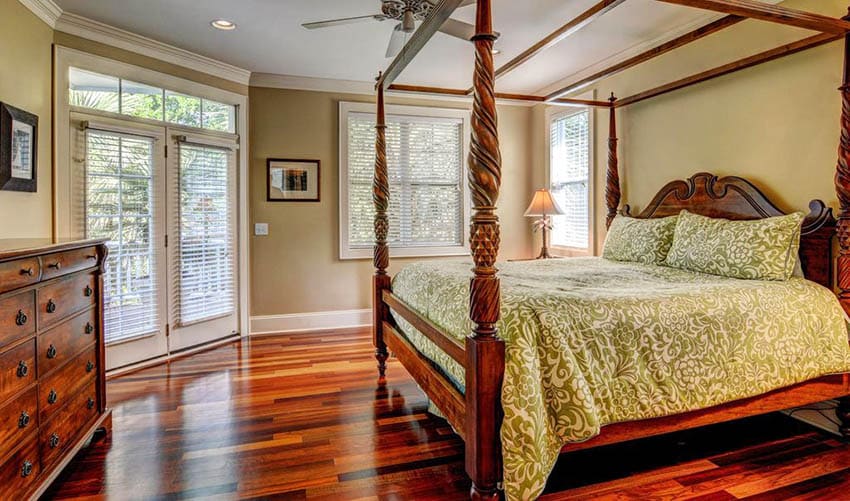
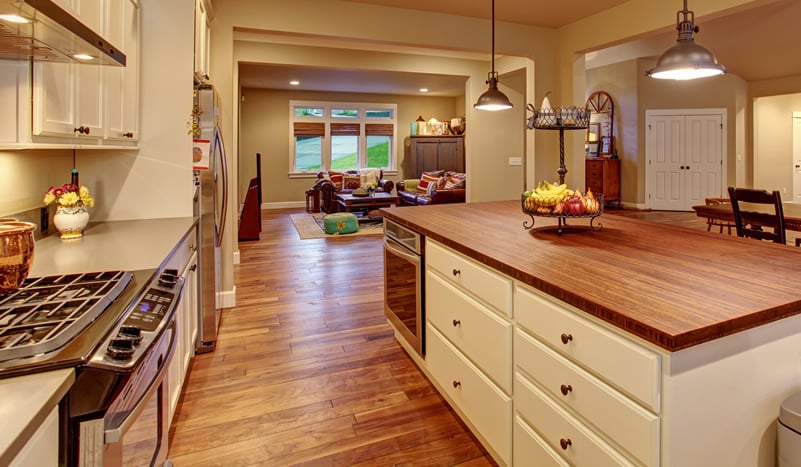
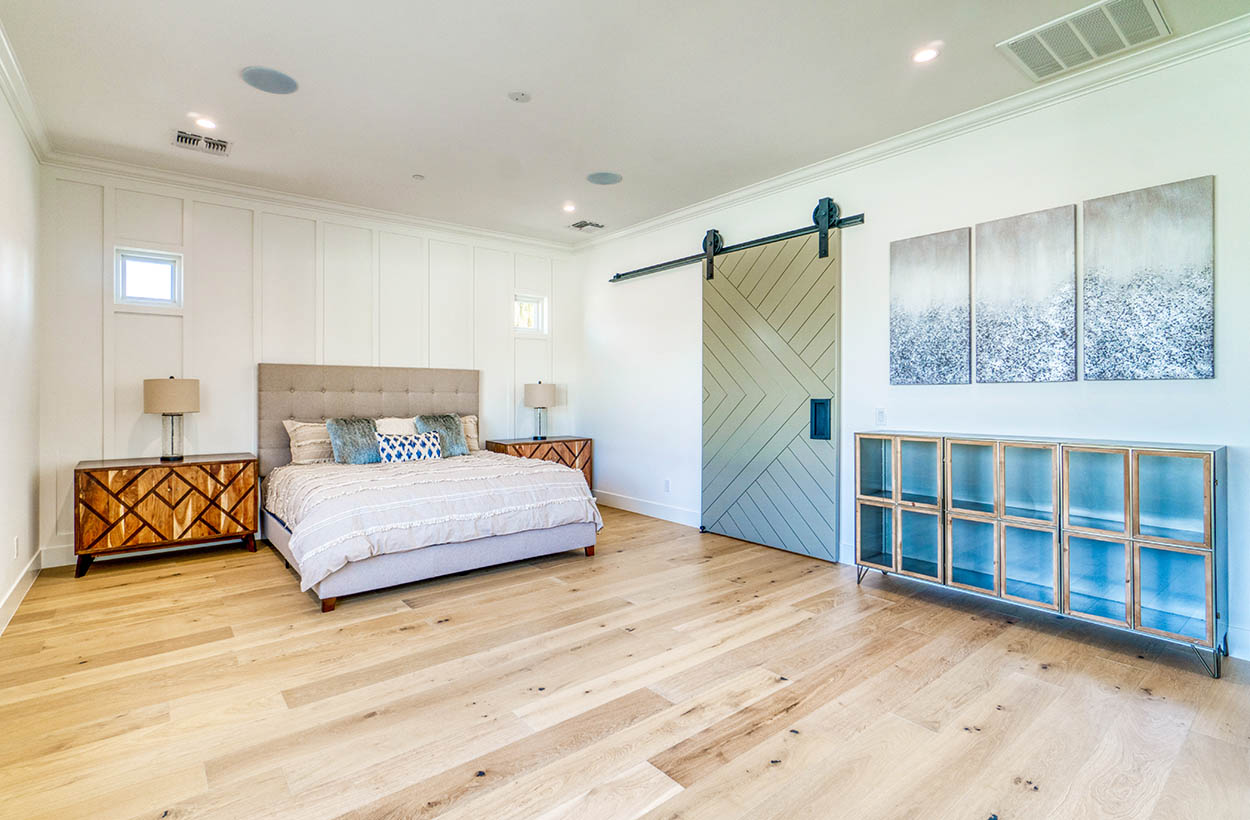

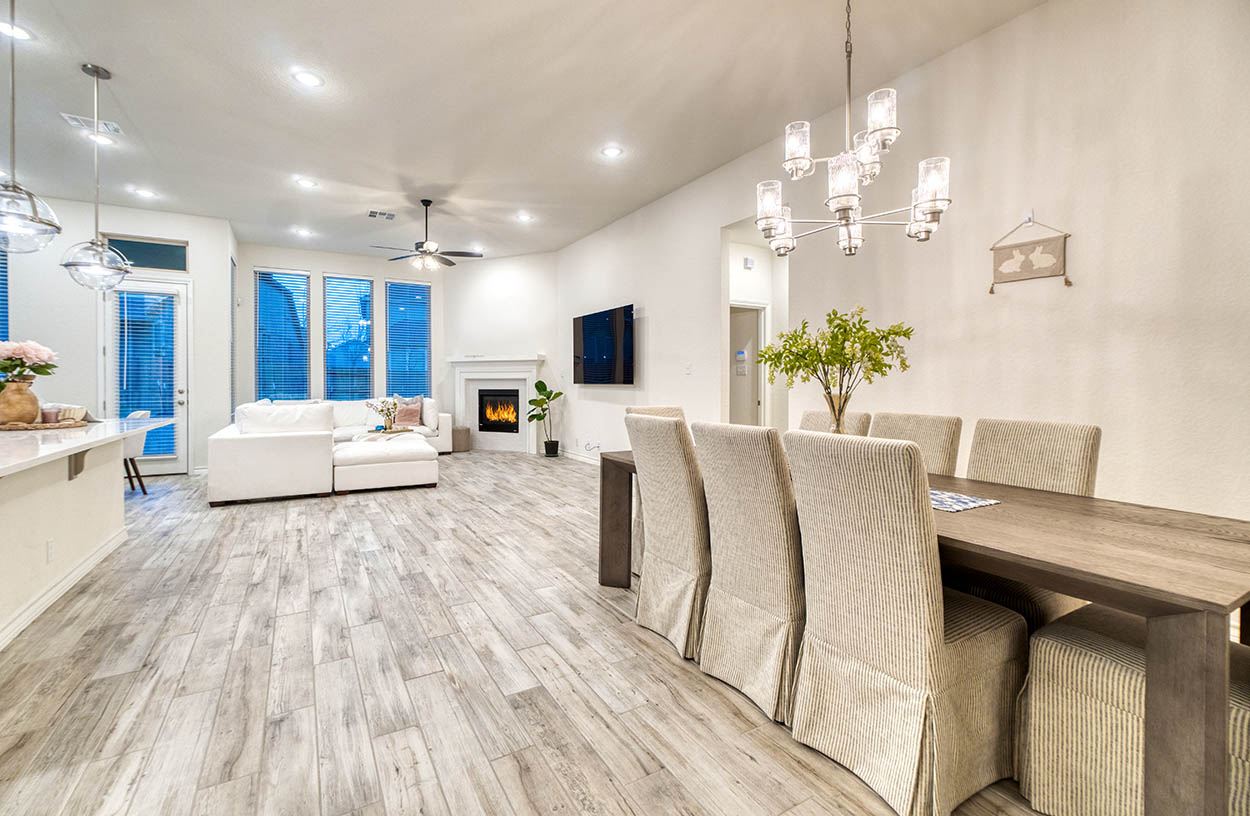
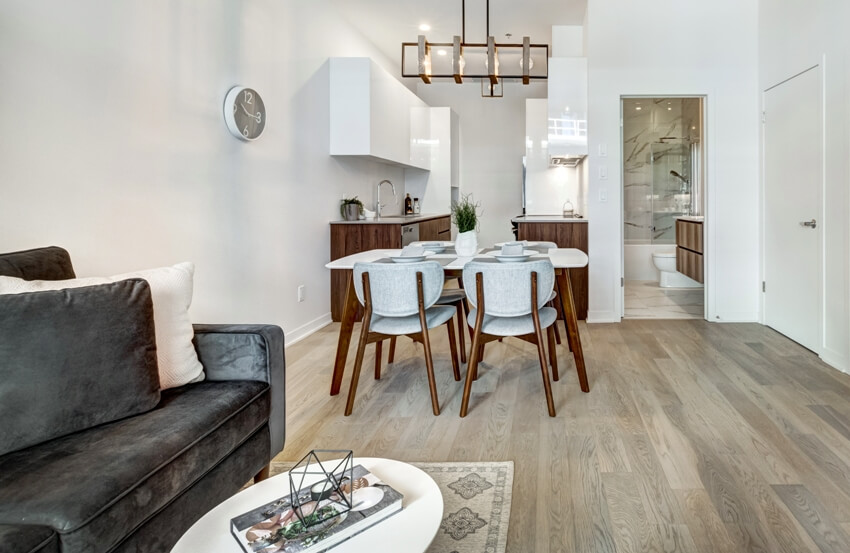
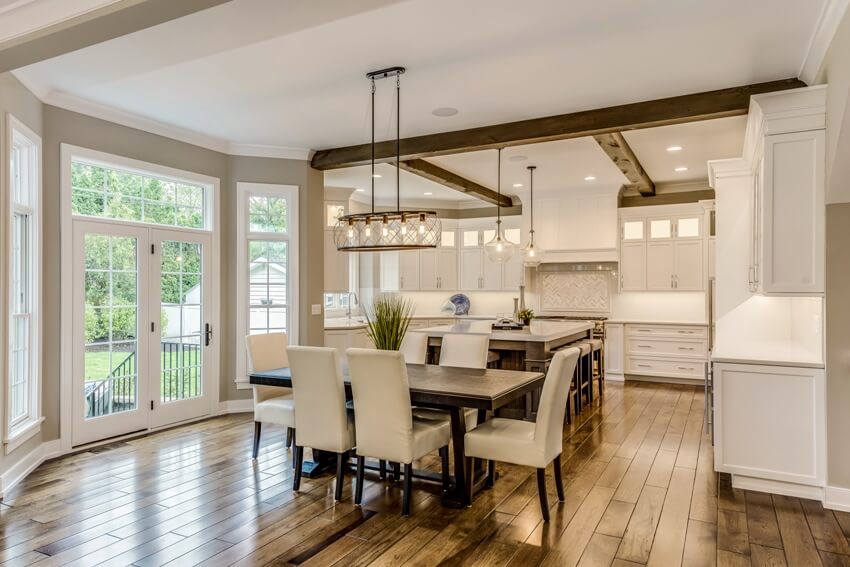
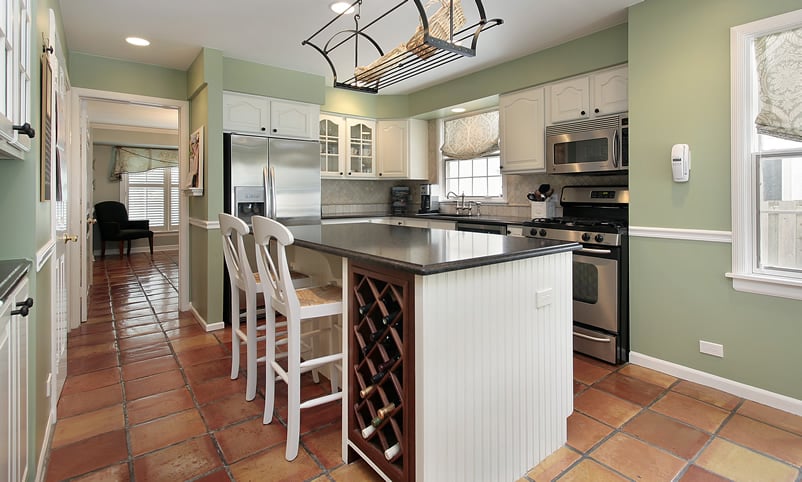

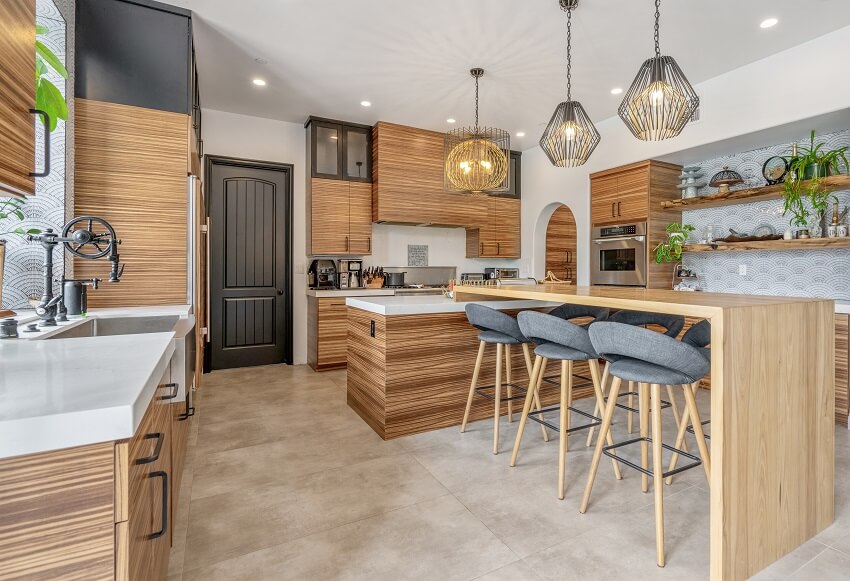

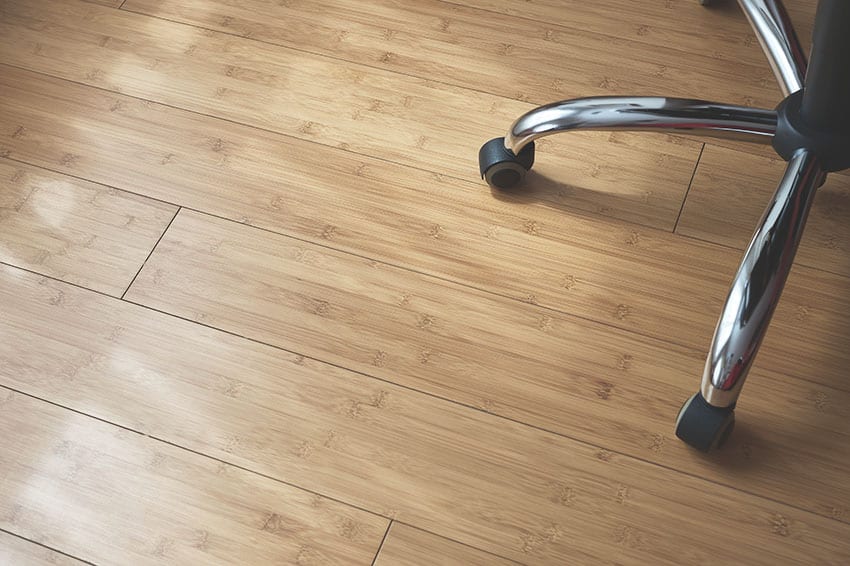


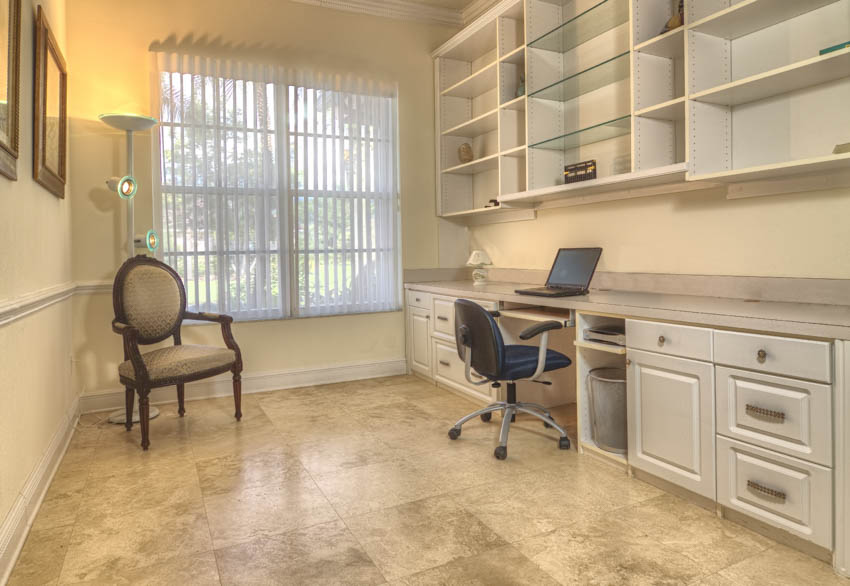


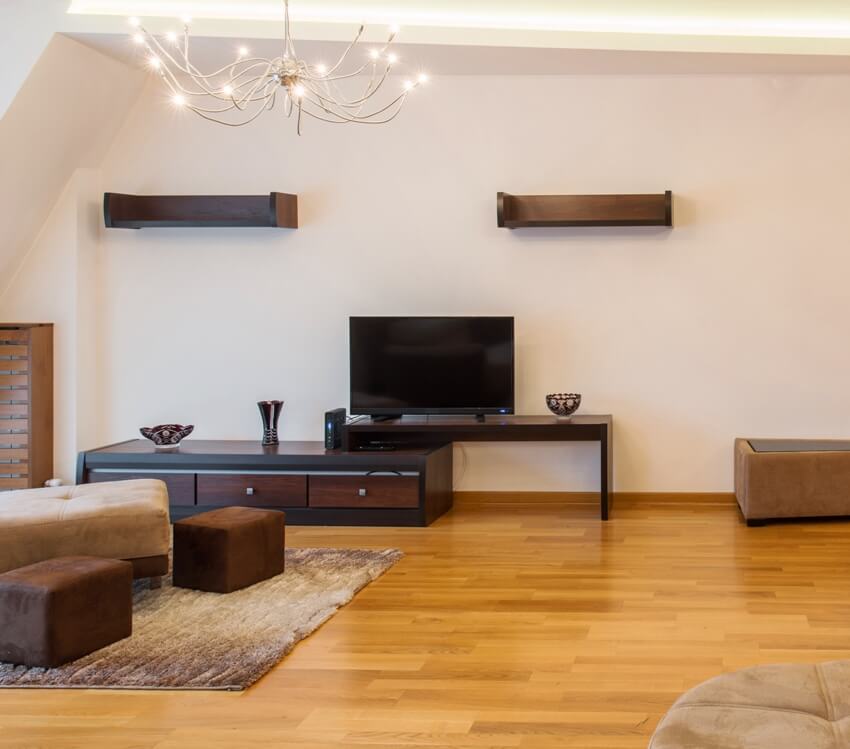
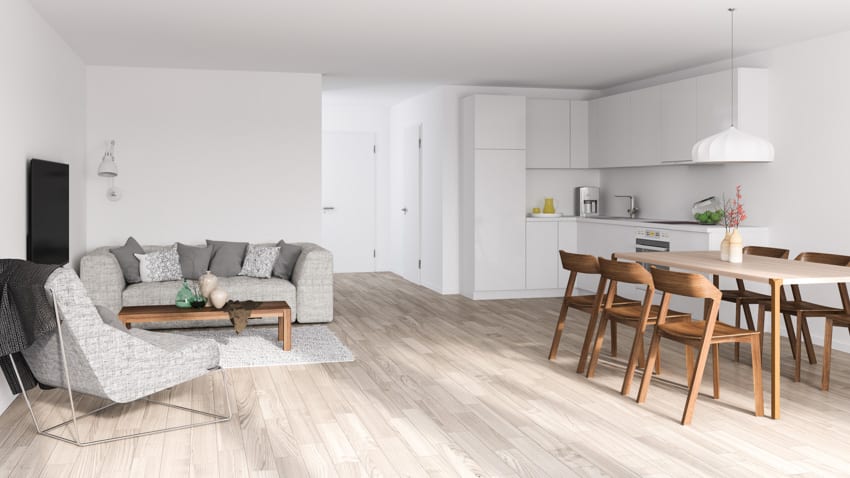

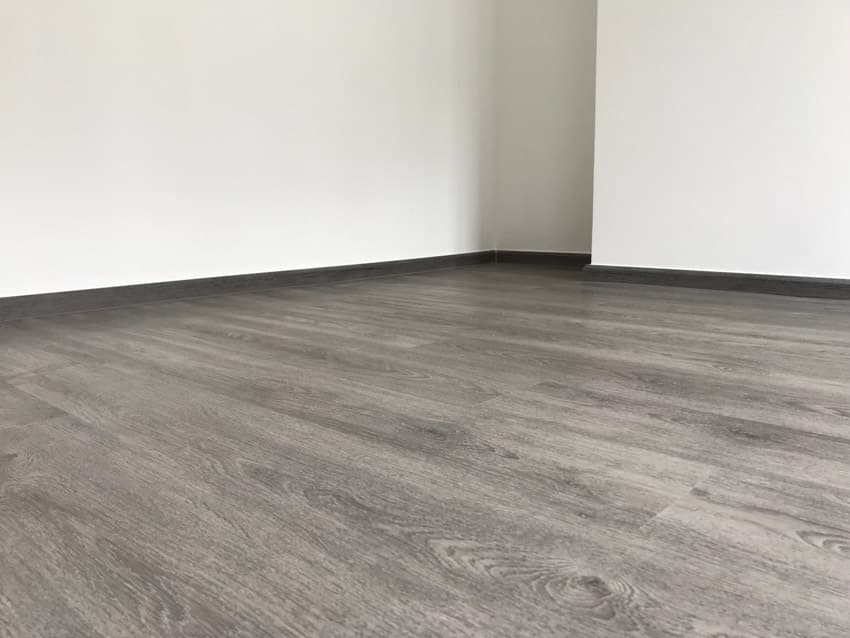
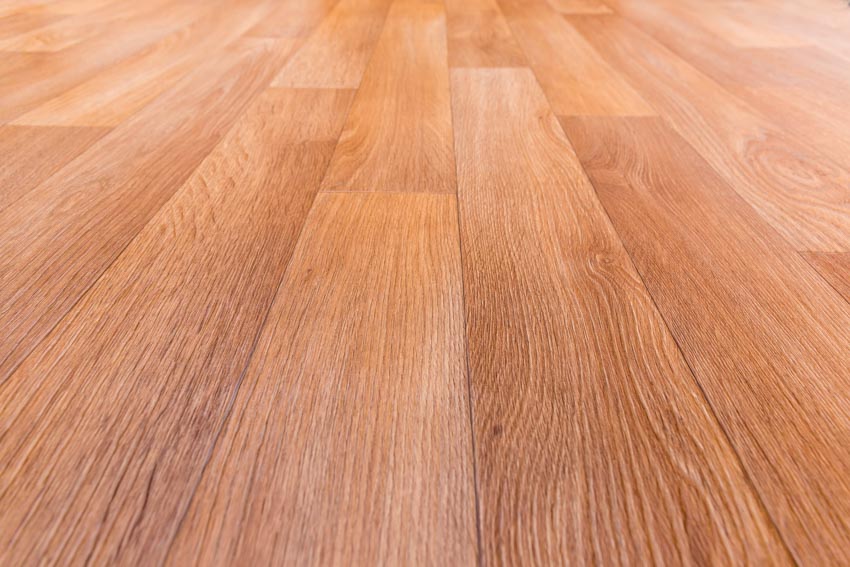

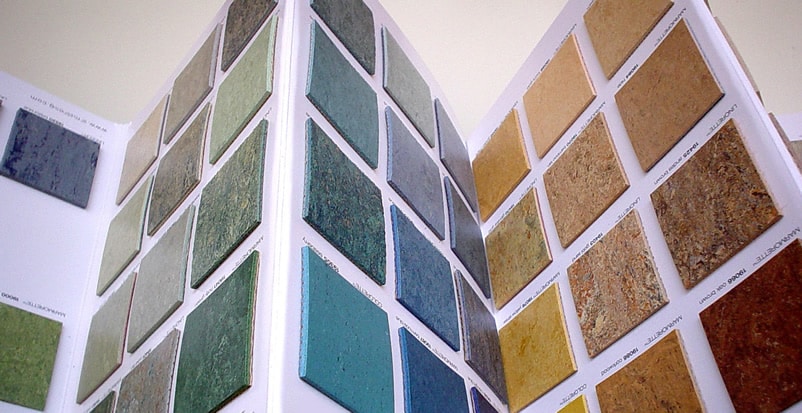
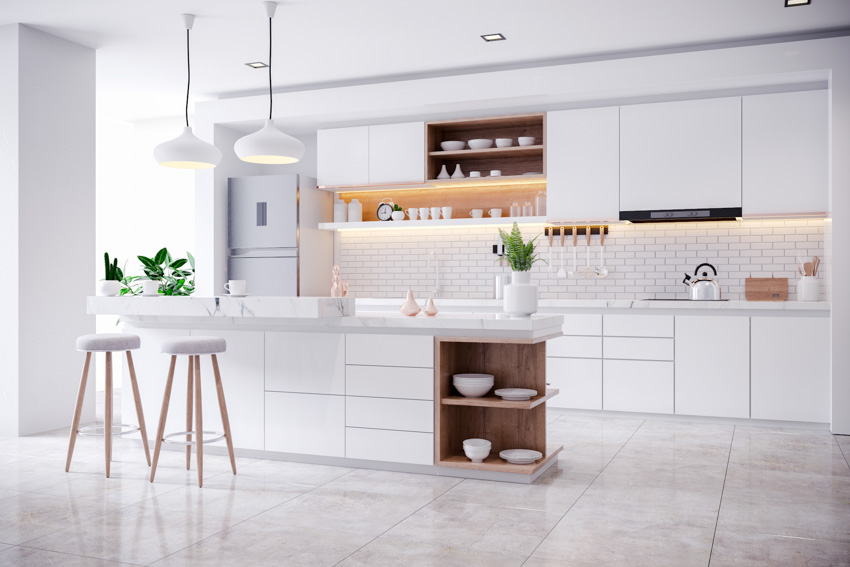

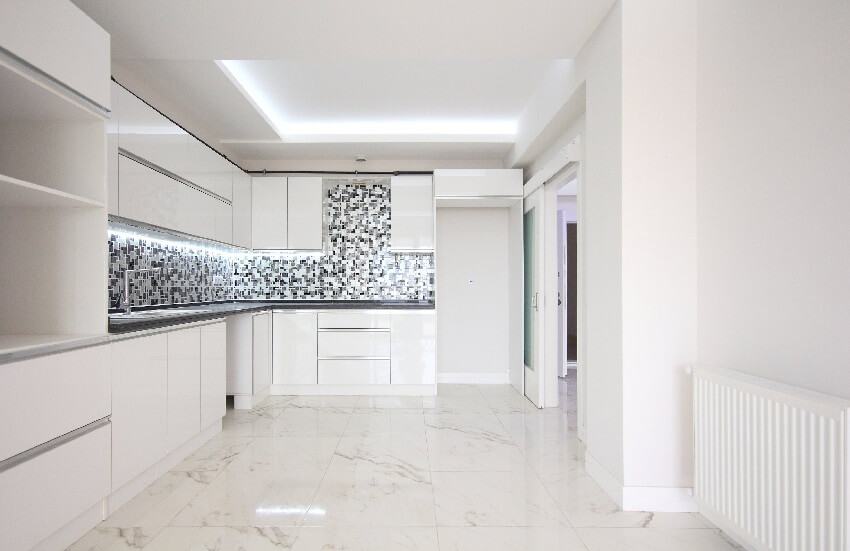
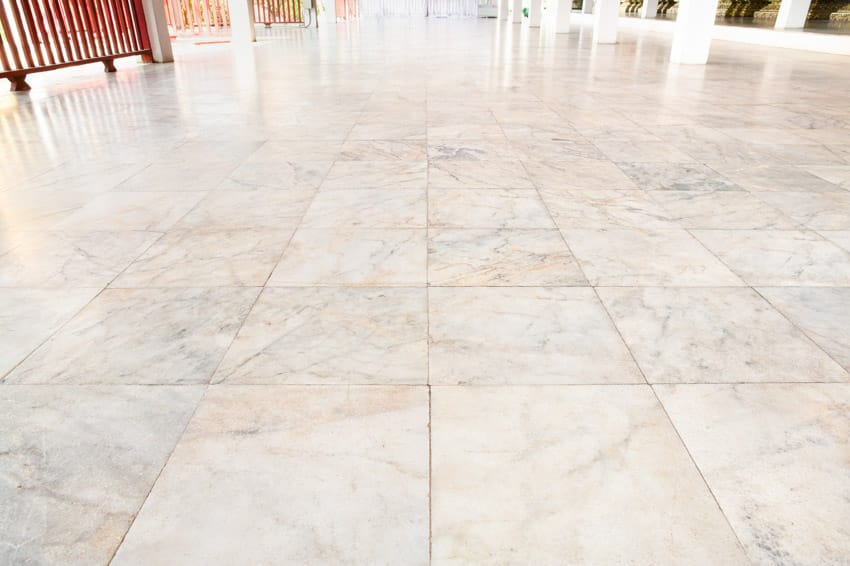

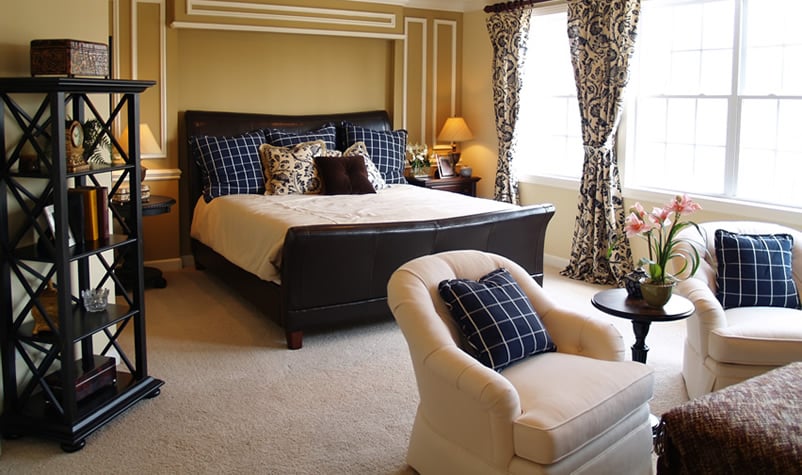
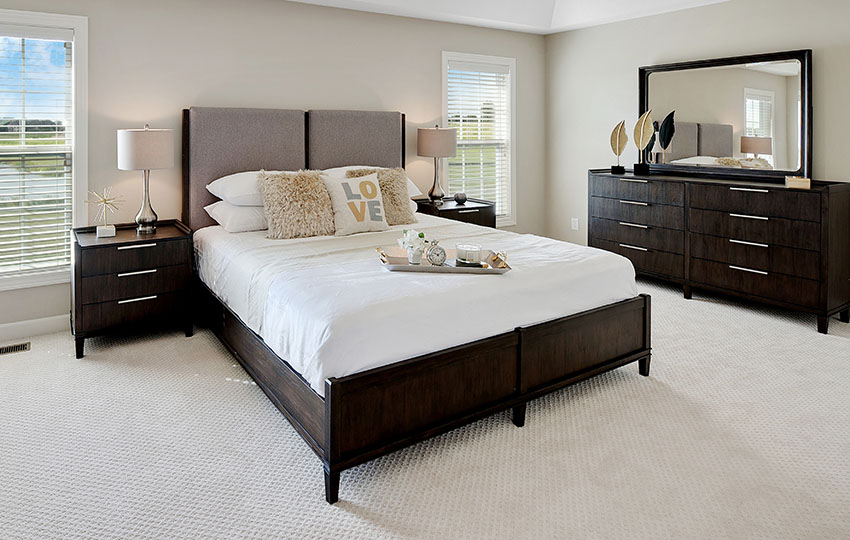
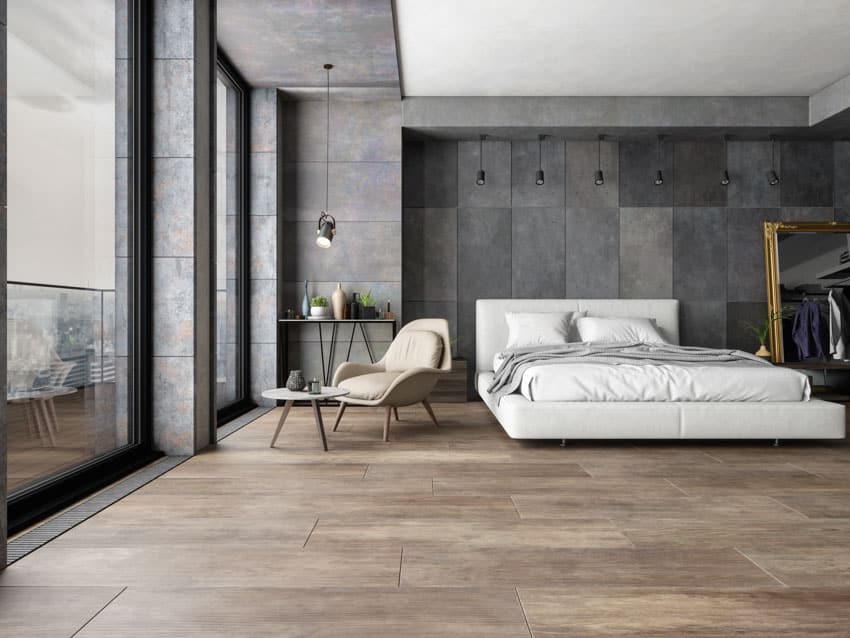

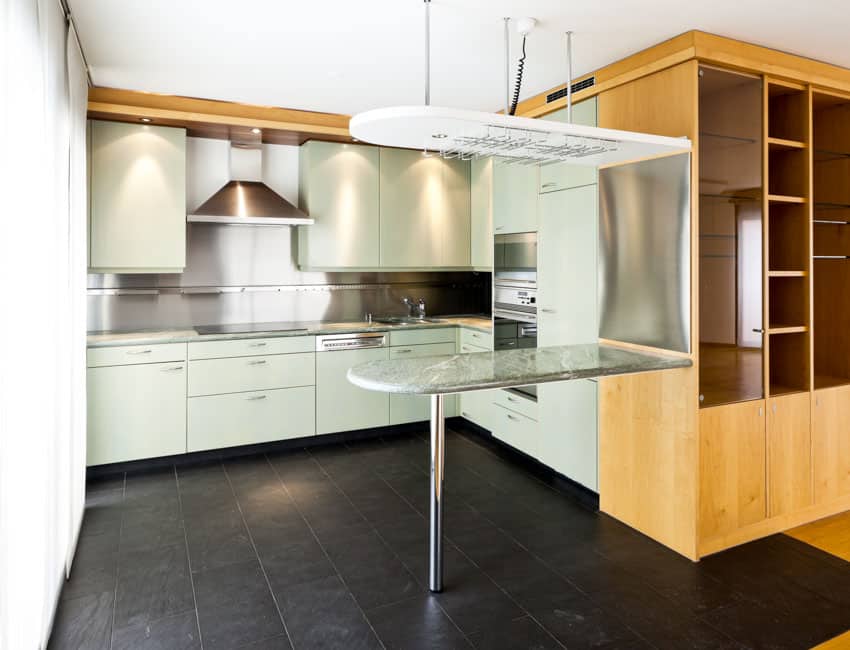

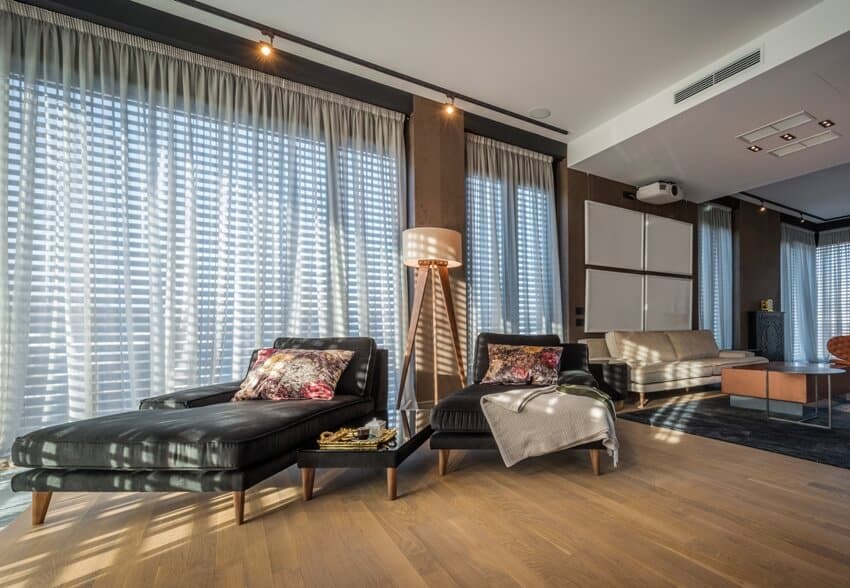
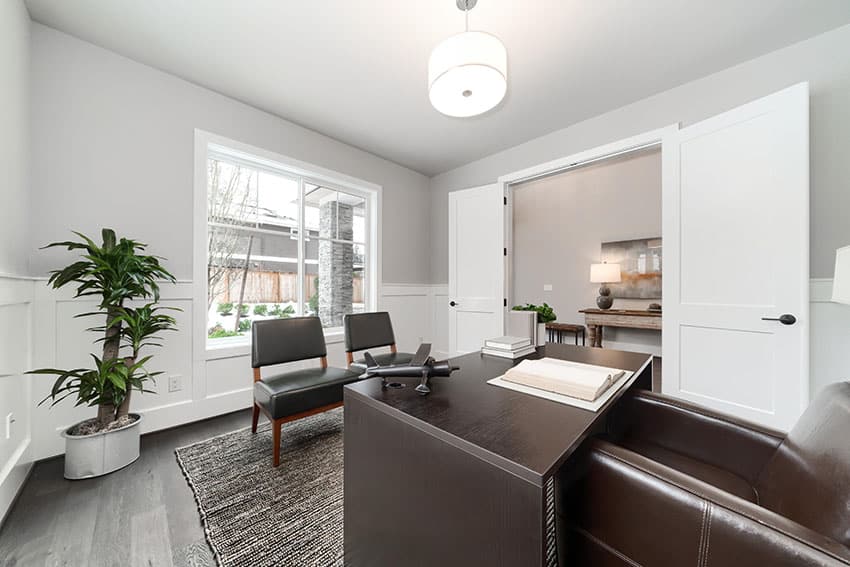
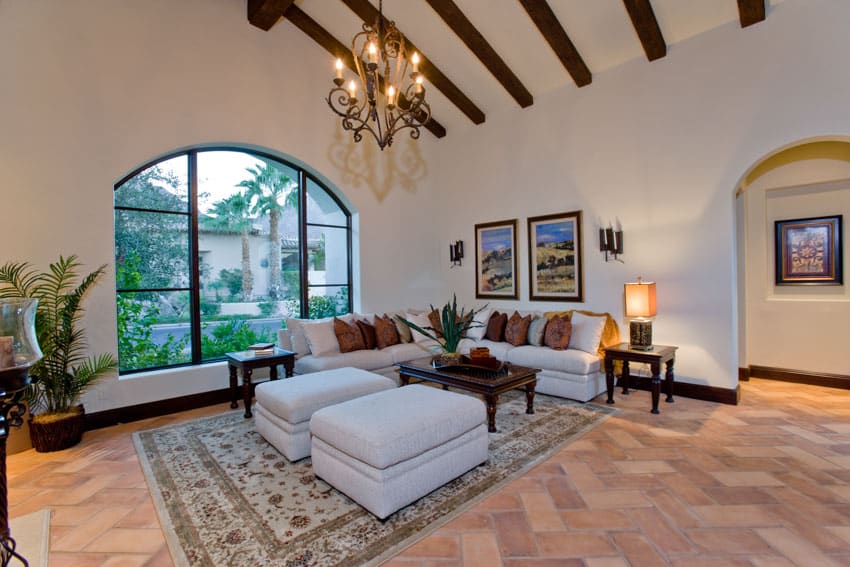
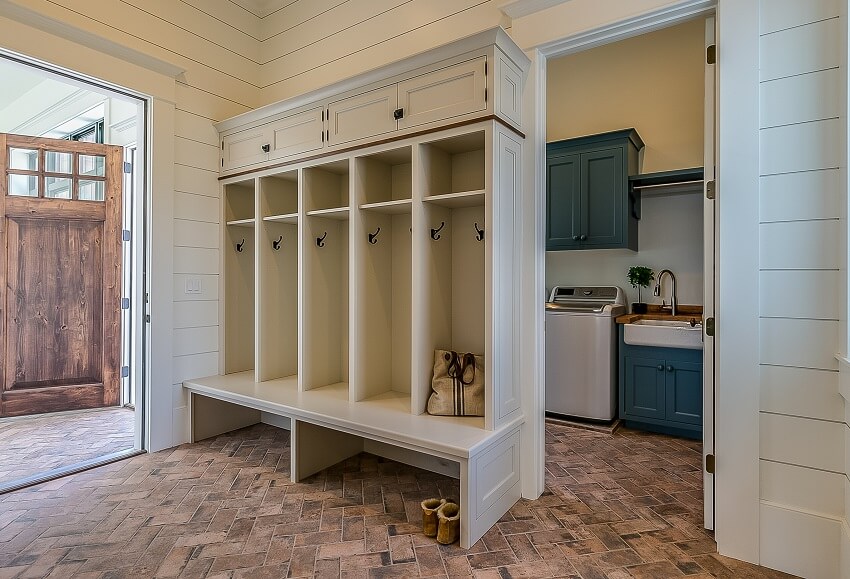
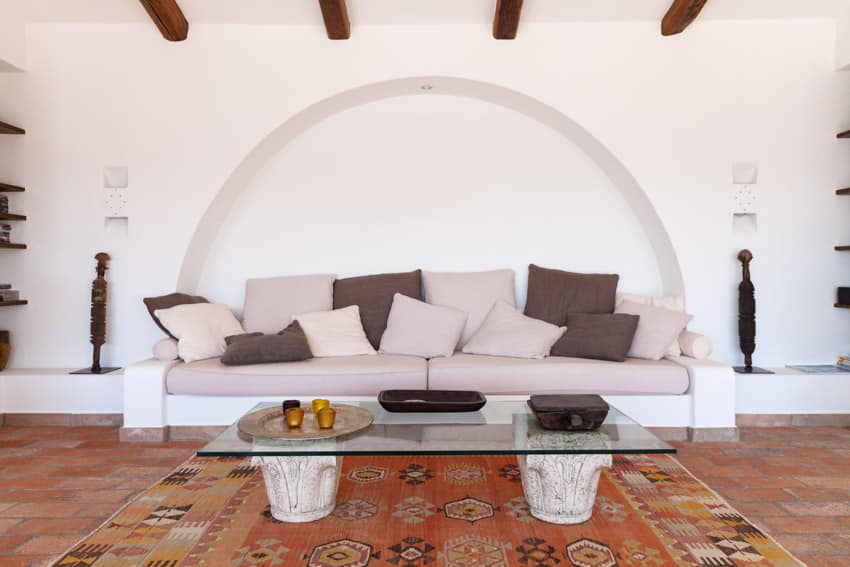
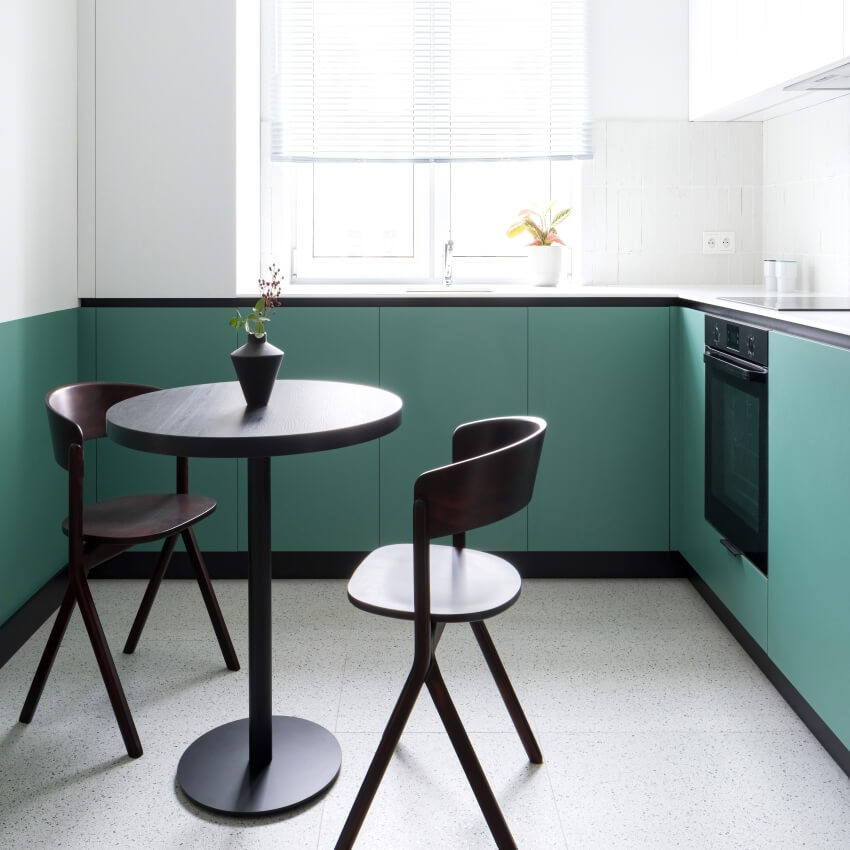


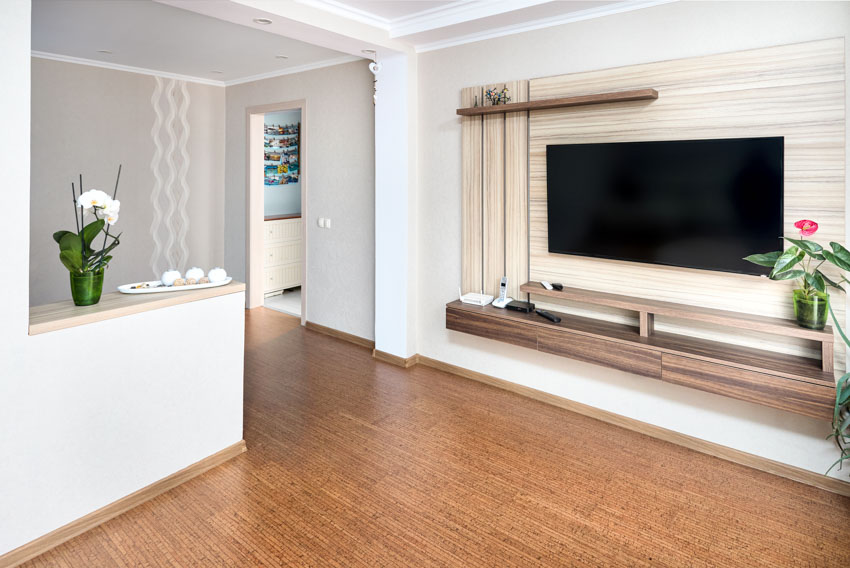

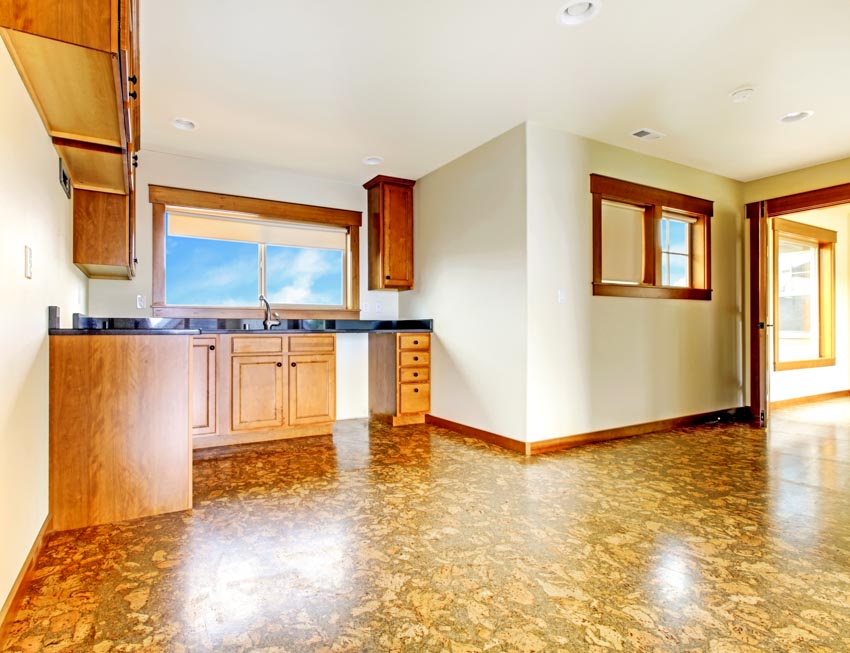

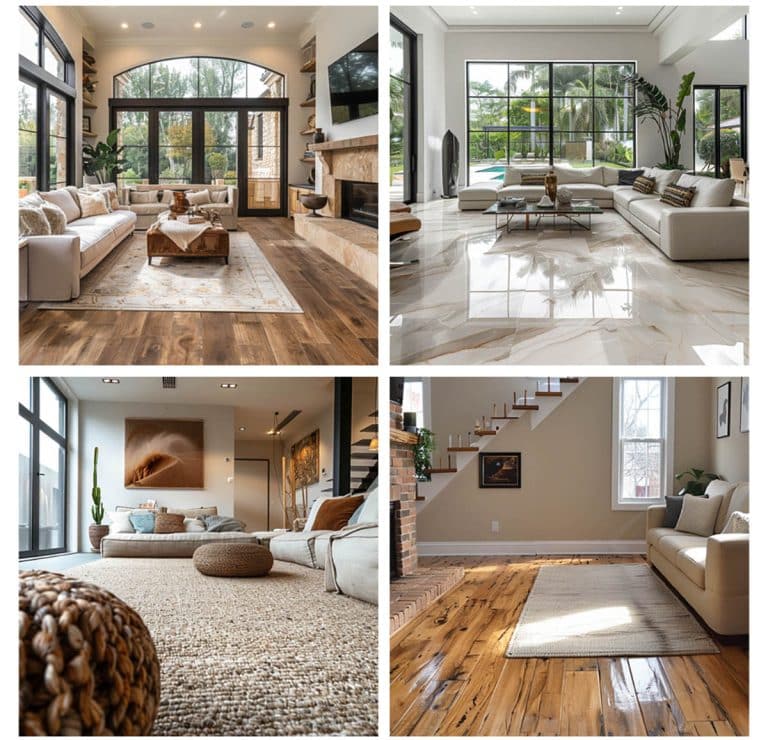
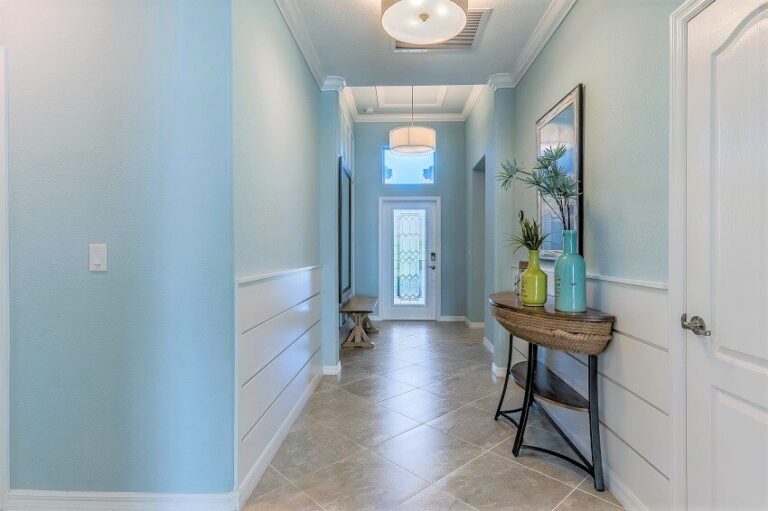


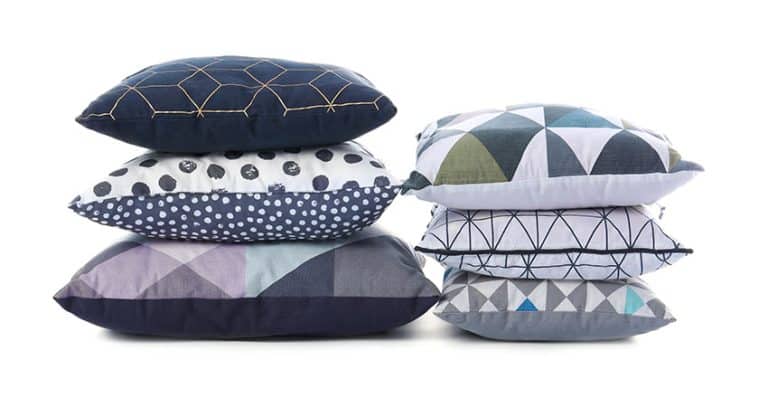
I was really interested in your example of marble flooring and how sleek the design can be. My kitchen has been my personal room of comfort whenever I’m in the house ever since I took up hobby cooking, and I’ve been wanting a more modern touch to it considering it was pretty old and worn out when I bought the house. Marble flooring sounds like the perfect material to update it with, so I’ll be looking for any flooring contractors who can provide me some when renovating.